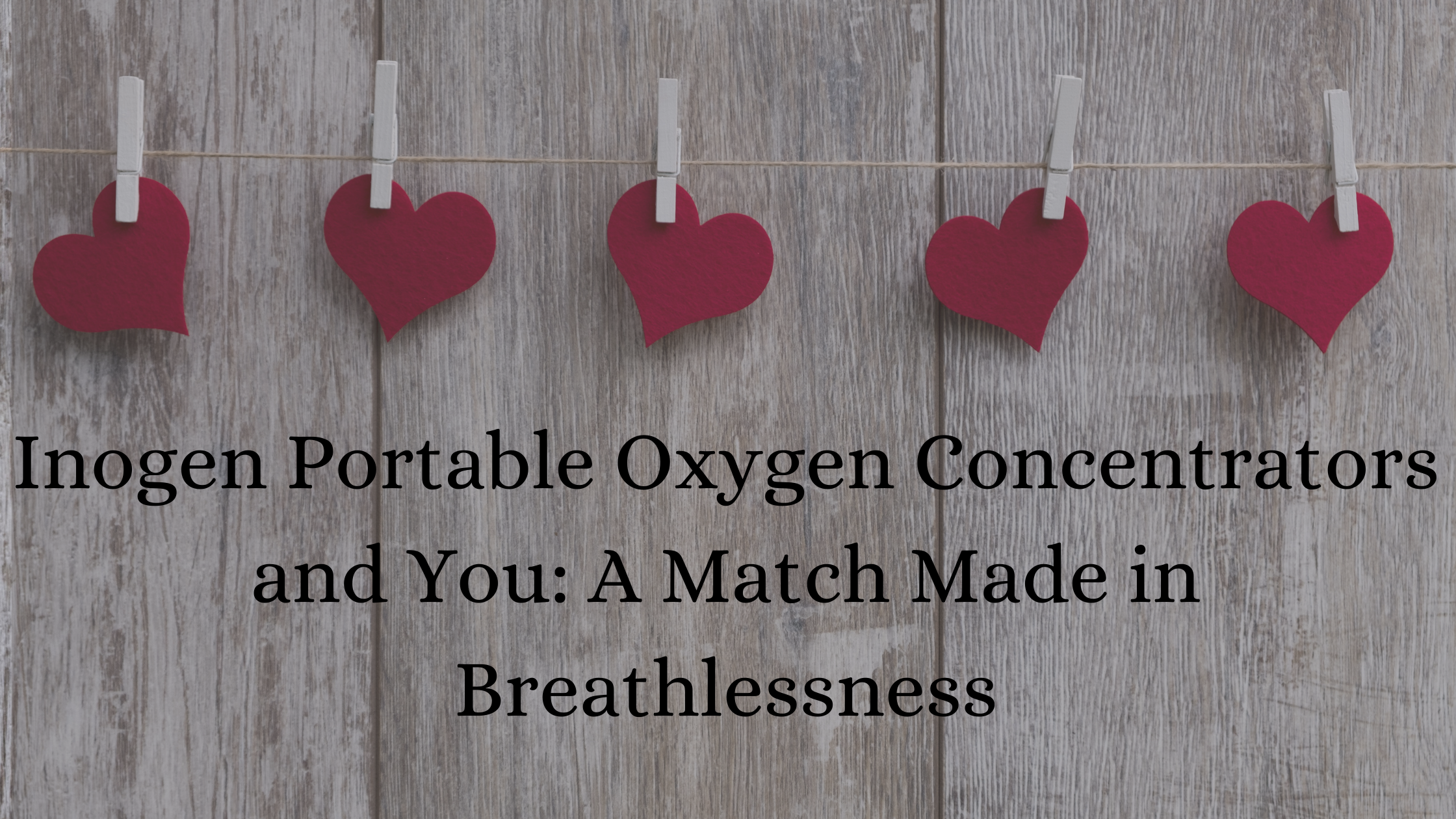
Similarly to a love match made in heaven, your oxygen therapy device should meet the same set of standard and be created to last a lifetime!
Your oxygen device, like a loved one, should make life better and more enjoyable. They should both possess qualities that bring out the best in yourself! Each should be reliable at all times of the day and night, and in times of hardship. In this article we will talk about our Inogen brand portable oxygen concentrators and how the right POC will make a perfect match for you and your lifestyle
If your oxygen device is not meeting your standards, you should consider a new journey with a new device that will open up new and exciting possibilities, give you freedom, and most importantly the reliability to breath everyday all day no matter what.
Finding the right oxygen device for you may seem like a daunting and overwhelming task, after all, there are so many brands, different machinery, massive lists of pros and cons, how do you know your oxygen device will meet your requirements?
Well in this article we are focusing on one brand, Inogen, and we will look at three different portable oxygen concentrators. Inogen is a company at the very top of the oxygen industry. They started off with one of the first FAA-approved portable oxygen concentrators and since then they have never looked back.
Meet the 3 eligible Inogen portable oxygen concentrators
{{cta('43b79c5e-6bd6-4f02-ac27-2d038d20c146','justifycenter')}}
Inogen Review
One thing that you should know is that even though you need oxygen therapy you actually do not have to sacrifice your personal freedom to hang out with your friends or visit with family due to the restrictive nature of your medical oxygen tanks.
There are cheaper and more efficient alternatives: Portable oxygen concentrators in general, and more specifically, the Inogen brand portable oxygen concentrators offer oxygen users a reliable and comfortable oxygen experience that makes life easier and more enjoyable.
The Inogen One G5
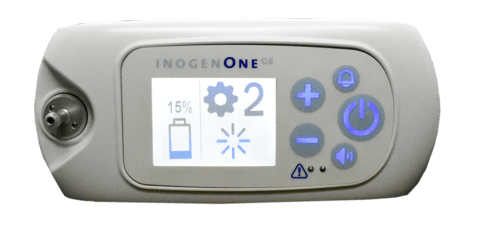
Ditch that cumbersome oxygen tank, and simultaneously regain your personal freedom with the brand new Inogen One G5 portable oxygen concentrator.
Instead of worrying about refilling your oxygen tanks, the Inogen One G5 restores your mobility thanks to its portable delivery of pulse flow settings of 1-6, which is powered by a rechargeable lithium-ion battery. This battery can last up to 13 hours, depending on your pulse dose prescription. You will be able to stay out longer without having to charge your device.
The One G5 portable oxygen concentrator is lighter and offers a longer battery life than the One G3.
Like we mentioned earlier, you should be able to rely on your oxygen device any time during the day or night, and with the One G5, you will be able to enjoy these same oxygen delivery benefits at night while you sleep thanks to the presence of Inogen’s intelligent Sleep Mode Technology.
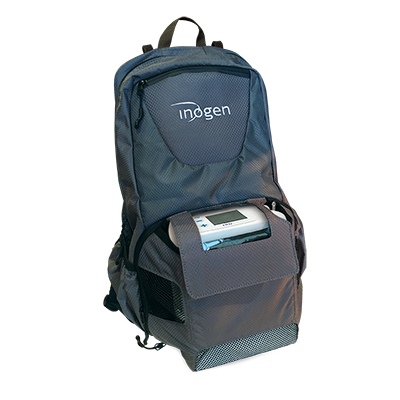
Essentially what this means is that as your breathing rate becomes more shallow as you sleep, the Sleep Mode Technology will go to work by increasing each bolus dose of oxygen.
Even if you are a mouth breather, the Sleep Mode Technology is able to detect shallow mouth breaths that are frequent when sleeping. This will then tell the Inogen One G5 to trigger a bolus dose based upon your specific fixed minute volume.
Now, most of our customers are able to use this technology to sleep with the Inogen One G5, however, we highly recommend you first speak with your doctor before using this while sleeping.
The One G5 will most likely satisfy any oxygen patient's needs who requires a pulse dose oxygen device because the Inogen One G5 portable oxygen concentrator offers pulse flow settings of 1-6! This means that even if you only require a pulse dose setting of 2-3, in the case of an emergency like a flare up, your doctor may recommend that you increase the oxygen flow in order to calm the systems you are experiencing during a flare. In this case, the One G5 is powerful enough to meet you required pulse dose settings should you need to increase it.
{{cta('b59df0c1-c4de-47a8-8e1c-0d33d4b414aa','justifycenter')}}
Learning about your oxygen device is hugely important if you want to reap all of the benefits that comes with it. Educating yourself about all of your medical devices should be one of your top priorities to ensure you are able to manage and treat your disease effectively. In an effort to help our patients with all aspects of their pulmonary wellness regimen, we’re now offering a FREE Thrive eLearning Course with the purchase of your Inogen One G5 portable oxygen concentrator.
This pulmonary wellness guide teaches you about more than just your great portable oxygen concentrator. It shows you how to make other lifestyle changes involving your diet, exercise routine, and more.
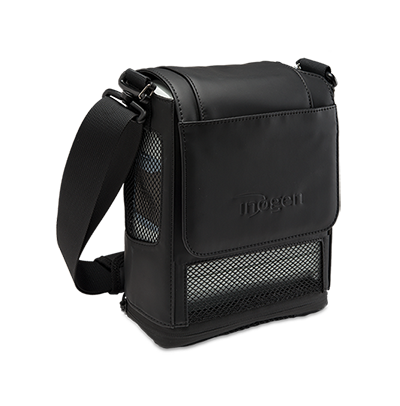
Thrive is an accessible, all-in-one online training course that aims to provide you with simple, practical, and actionable tips for managing chronic obstructive pulmonary disease (COPD). With this program, you’ll also have access to one-on-one counseling with certified pulmonary experts, support group opportunities, online learning courses, and much more! Below is a full list of what
you’ll receive:
- Direct access to a private support group (patients, caretakers, and experts)
- Years of COPD and respiratory illness knowledge
- Step-by-step disease management regimen
- Best selling e-books and guides
- Step-by-step breathing exercises
- Learn about exacerbations and how to prevent them
- Speak with a nutritionist about refining and improving your diet
COPD symptoms can only be managed with impeccable lifestyle choices. This ePulmonary Advanced Online Workshop will help you get back on track and locate any anomalies in your COPD treatment plan. The Inogen One G5 will provide you with the oxygen and freedom that you need to live life on your own terms, but this training program will make you unstoppable!
This Thrive ePulmonary Online Training Program is a $497 value, but we’re offering it for FREE! Order your Inogen One G5 today and experience the freedom you want and deserve!
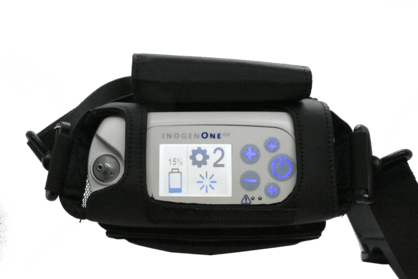
So let's recap the One G5:
The advantages of the Inogen One G5:
- Weighs Less Than the Inogen One G3
- Improved Battery Life Compared to the G3 for Extended Mobility
- Enjoy Interruption Free Oxygen Therapy
- Sleep Mode Technology for a Delivery of Oxygen Therapy While You Sleep
- Reliable in the case of an emergency
Inogen One G3
The Inogen One G3 offers incredible battery life in combination with a compact and lightweight design. So even though this model is earlier than the One G4 and G5, it is still one of the most popular portable oxygen concentrators on the market for over two years
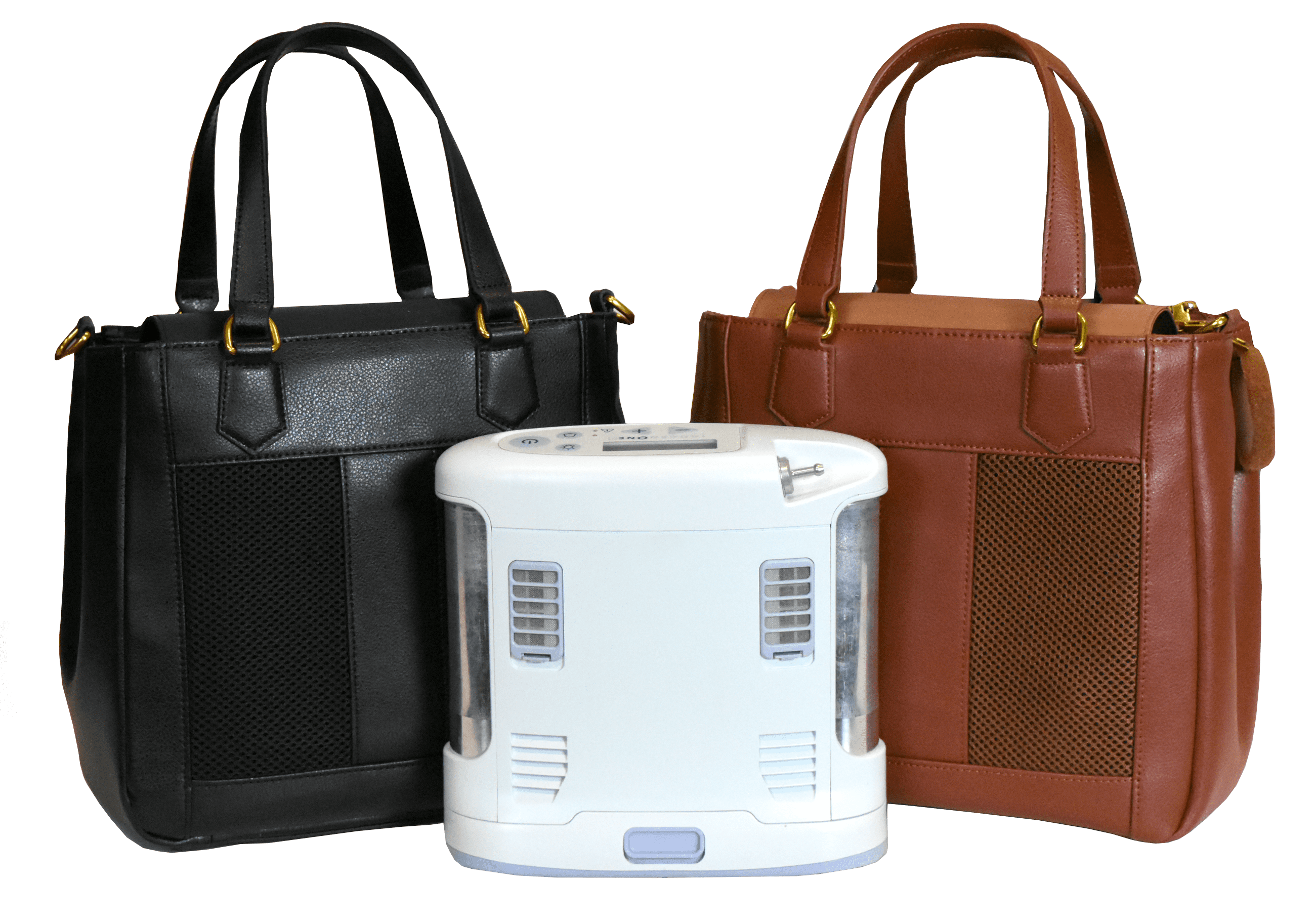
The One G3 weighs 4.8 pounds and offers up to 8 hours of battery life. So the G3 is easy to carry wherever you go all day long.
Whether you’re going on vacation, heading to the doctor, exercising, or lounging around your house you will be able to comfortably carry your Inogen One G3 with you. And if your lifestyle calls for longer battery life, even with the 16-Cell battery, the G3 still weighs less than 6 pounds!
One of the other major reasons why the Inogen One G3 is one of the most popular units on the market is the fact that it is one of the most durable and reliable concentrators available. This is an essential quality that you should look for in a portable oxygen concentrator A lot of respiratory diseases are progressive in nature. So if you require a setting of 2 or 3, the Inogen One G3 provides you with some wiggle room for an increase in your flow rate past these settings. So if your disease progresses and you prescribed flow rate increases you won’t have to worry about getting a new oxygen concentrator.
The Inogen One G3 is a pulse flow portable oxygen concentrator. It does not have the ability to provide a continuous flow. It offers pulse flow settings 1-5 and can accommodate nearly any oxygen patient who can use a pulse flow.
Despite the fact that the Inogen One G3 is a pulse flow portable oxygen concentrator, the majority of oxygen patients can still use this machine for nighttime oxygen delivery! Just like the Inogen One G2, the G3 is equipped with Intelligent Delivery Technology.
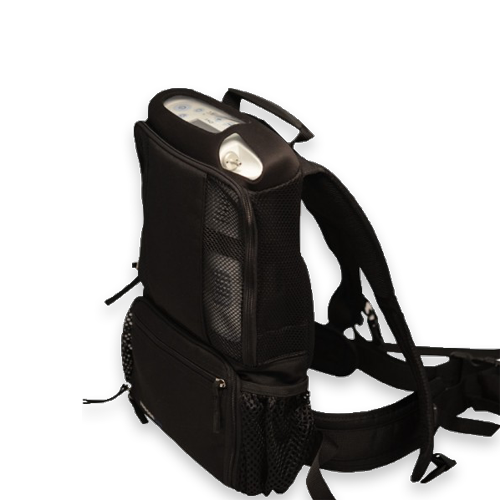
Inogen’s Intelligent Delivery Technology ensures that your oxygen is delivered within the first 400 milliseconds after your concentrator detects your breath. This almost guarantees that you’re receiving the entire bolus dose of oxygen delivered by your G3.
Along with delivering oxygen within the first 400 milliseconds, the Intelligent Delivery Technology responds to your breath rate! This feature is what allows you to use your Inogen One G3 while you sleep even though it doesn’t offer a continuous flow.
When you are sleeping your breathing rate decreases. As the Intelligent Delivery Technology monitors your breath rate, it will automatically increase or decrease the amount of oxygen per bolus dose depending on the oxygen setting and your breath rate.
For example, if you are breathing at a rate of 10 breaths per minute the Inogen One G3 will double the amount of oxygen per bolus dose than if you were breathing at 20 breaths per minute. This is to ensure you are getting your required oxygen.
One of the big reasons pulse flow portable oxygen concentrators aren’t recommended to use at night while you sleep is that they don’t detect mouth breaths. The Inogen One G3, on the other hand, will be able to detect shallow mouth breaths! So as long as you don’t need a CPAP or BiPAP machine at night, the Inogen One G3 should work for your nighttime oxygen delivery system.
Using the Inogen One G3 is simple and straightforward. The control panel is equipped with an easy to read LCD screen and large push buttons.
The LCD screen shows you vital information like the flow rate you have the machine set to and your remaining battery life. If you are having a hard time reading the screen you have the option of turning the LCD screen backlight on or off.
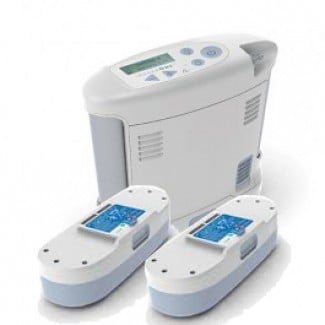
There are a total of 5 buttons and each push button is labeled with its specific function:
1. Power Button (standard power symbol)
2. Display Backlight Button (lightbulb)
3. Audible Alarm Button (bell)
4. Flow Rate Up Button (plus sign)
5. Flow Rate Down Button (minus sign)
One of the most important features you should look for in a portable oxygen concentrator is the battery life. And it’s easy to understand why… More battery life equals more freedom and independence.
With the Inogen One G3, you have 2 different battery options to choose from:
8-Cell Battery
16-Cell Battery
The 8-Cell battery keeps your Inogen One G3 at 4.8 pounds and supplies you with up to 4 hours of battery life. It’s perfect for quick errands, doing things around your house, gardening, or exercising.
The 16-Cell battery adds about a pound of weight to your Inogen One G3, but it supplies you with double the battery life. When you think about it, adding an extra pound of weight to get up to 4.5 additional hours of battery life is a pretty good deal!
The 16-Cell battery is ideal for things like traveling, long trips away from your house, and using as a backup power source in case of a power outage.
The Inogen One G4
Weighing in at 2.8 pounds… Yes, you read that right! At 2.8 the Inogen One G4 is the smallest and lightest portable oxygen concentrator to offer pulse flow settings 1-3 and its battery life is surprising for how small this machine is.
The Inogen One G4 offers 2 different battery options:
Single Battery
Double Battery
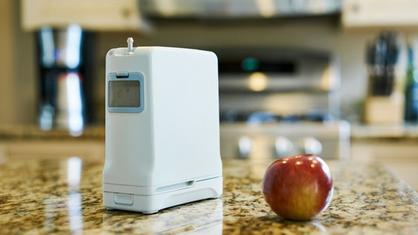
With the single battery, you can get up to 2.25 hours of use on a single charge on a setting of 2 and your Inogen One G4 will weigh just 2.8 pounds. This setup is perfect for making trips to the doctor’s office, running to the store, doing things around your house, and exercising.
The double battery, on the other hand, gets up to 4.5 hours of use on a single charge. Despite doubling your battery life your Inogen One G4 will weigh a mere 3.3 pounds with the double battery installed. This setup will give you the freedom and independence to travel, go to sporting events, or get dinner and see a movie.
Being less restrictive with its oxygen settings and by giving you up to 5 hours of battery life, the Inogen One G4 set the bar high for competitors to follow.
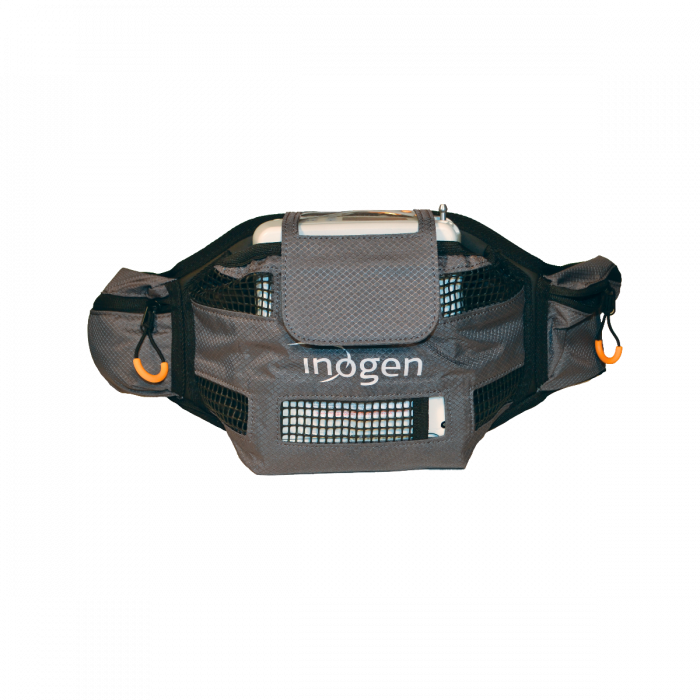
Recharging your Inogen One G4 batteries is fast and convenient. You have a total of three different charging options to choose from:
AC Power Supply
DC Power Supply
External Battery Charger
The AC power supply is the most common charging option. It charges your batteries faster than the DC power supply and you can use your Inogen One G4 on all 3 oxygen settings while you recharge. The AC power supply is equipped with a 110v power cord allowing you to plug it into any wall outlet. You can use it at home, in your hotel room, on a cruise ship and even some of the newer airplanes have 110v outlets at every seat.

While your Inogen One G4 is plugged into the AC power supply you will have an unlimited amount of oxygen. So, make sure you plug your G4 into the AC power supply if you plan on using it to sleep.
The DC power supply gives you the ability to power your concentrator and recharge your batteries on the go! It is equipped with a 12v power cord so you can plug it into the cigarette lighter or 12v outlet in your vehicle. You can take it in your car, truck, RV, or on your boat!
While your Inogen One G4 is plugged into the DC power supply it will recharge and supply you with oxygen on all 3 settings. However, if you are using your G4 while it is plugged into the DC power supply it will take longer to recharge. Remember to turn your vehicle on before plugging your G4 into the DC power supply otherwise, you might blow a fuse or drain your vehicle’s battery.
Although the external battery charger is an optional accessory, it is the most convenient charging option available for your Inogen One G4. It’s a single bay charger that gives you the ability to recharge your extra batteries without plugging your concentrator into a power supply.
{{cta('fa8abc2a-1e88-4fa3-82fd-1cb5b9ed43b2','justifycenter')}}
This means you can run errands, exercise, or go visit your friends and come home to a fully charged battery waiting for you!
Because of its small size, the Inogen One G4 is perfect for any occasion. Its compressor is rated to last 20,000 hours so you can have peace of mind using it every day. It’s small enough to carry virtually anywhere without feeling like your arm is going to fall off. And traveling with oxygen has never been easier than it is with the G4.
Inogen Price
Inogen portable oxygen concentrators range in prices, and when you purchase your inogen system from LPTMedical.com you are getting the best possible price. Inogen cost comparisons can be broken down in detail by our experienced respiratory specialists by calling 1(800)-946-1201 or by emailing info@lptmedical.com
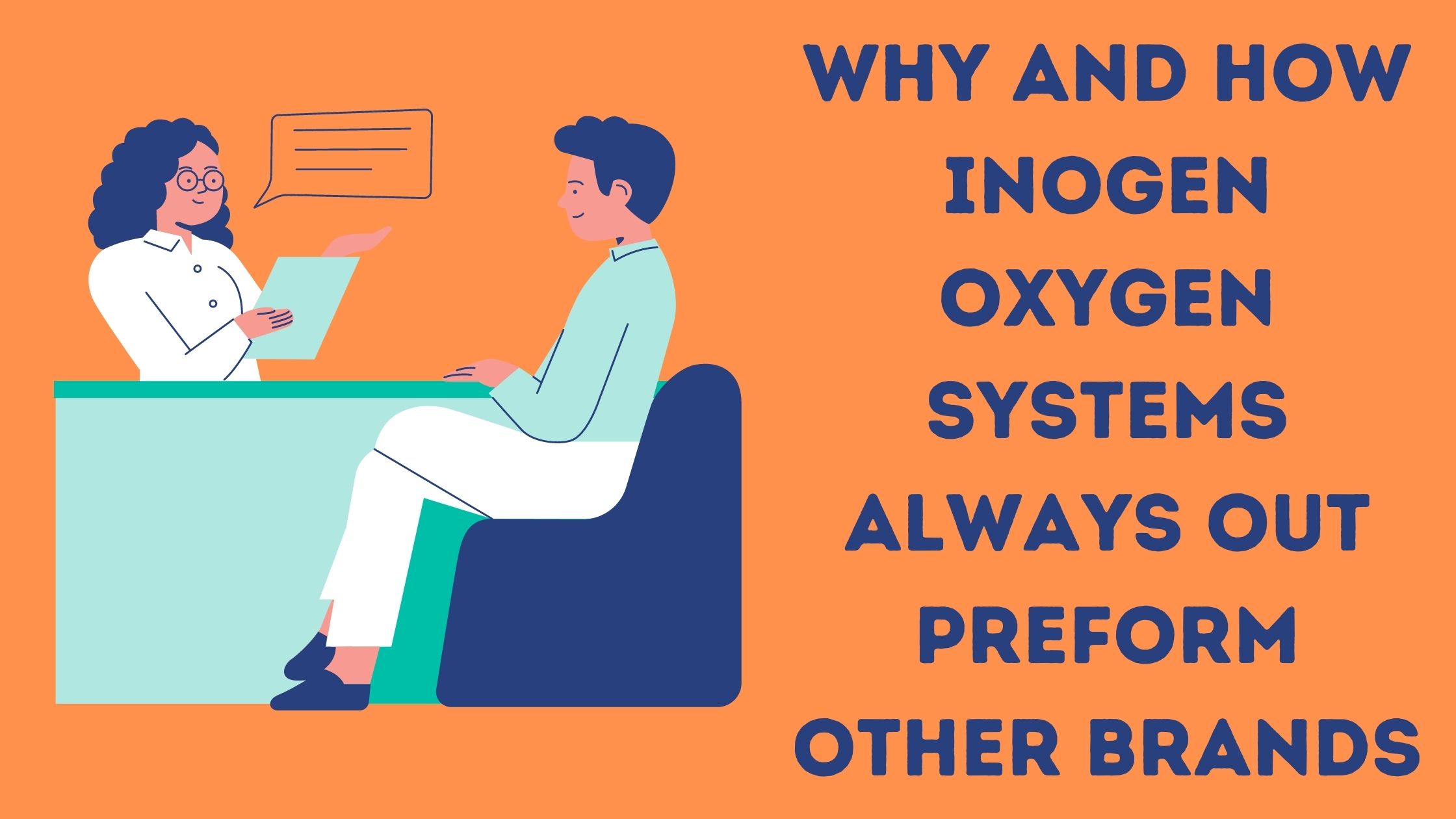
Oxygen therapy is a life saving therapy that helps oxygen patients around the world treat respiratory diseases like chronic obstructive pulmonary disease or COPD. Oxygen therapy is most commonly administered through nasal tubing called oxygen cannulas or with a face mask if you are using oxygen at night time while you sleep.
{{cta('fa8abc2a-1e88-4fa3-82fd-1cb5b9ed43b2','justifycenter')}}
There are many ways to treat COPD, but oxygen therapy is the only treatment that has been proven to prolong life in hypoxic patients.
If you use oxygen therapy you probably have a liquid oxygen tank, a gas oxygen tank, or a portable oxygen concentrator, all of these devices will supply you with oxygen, however a portable oxygen concentrator (POC) is the easiest-to-use solution for better breathing.
In this blog you will be able to compare different solutions for your oxygen therapy needs, and specifically how Inogen oxygen devices compare to other oxygen therapy devices.
How Inogen Oxygen Devices Work
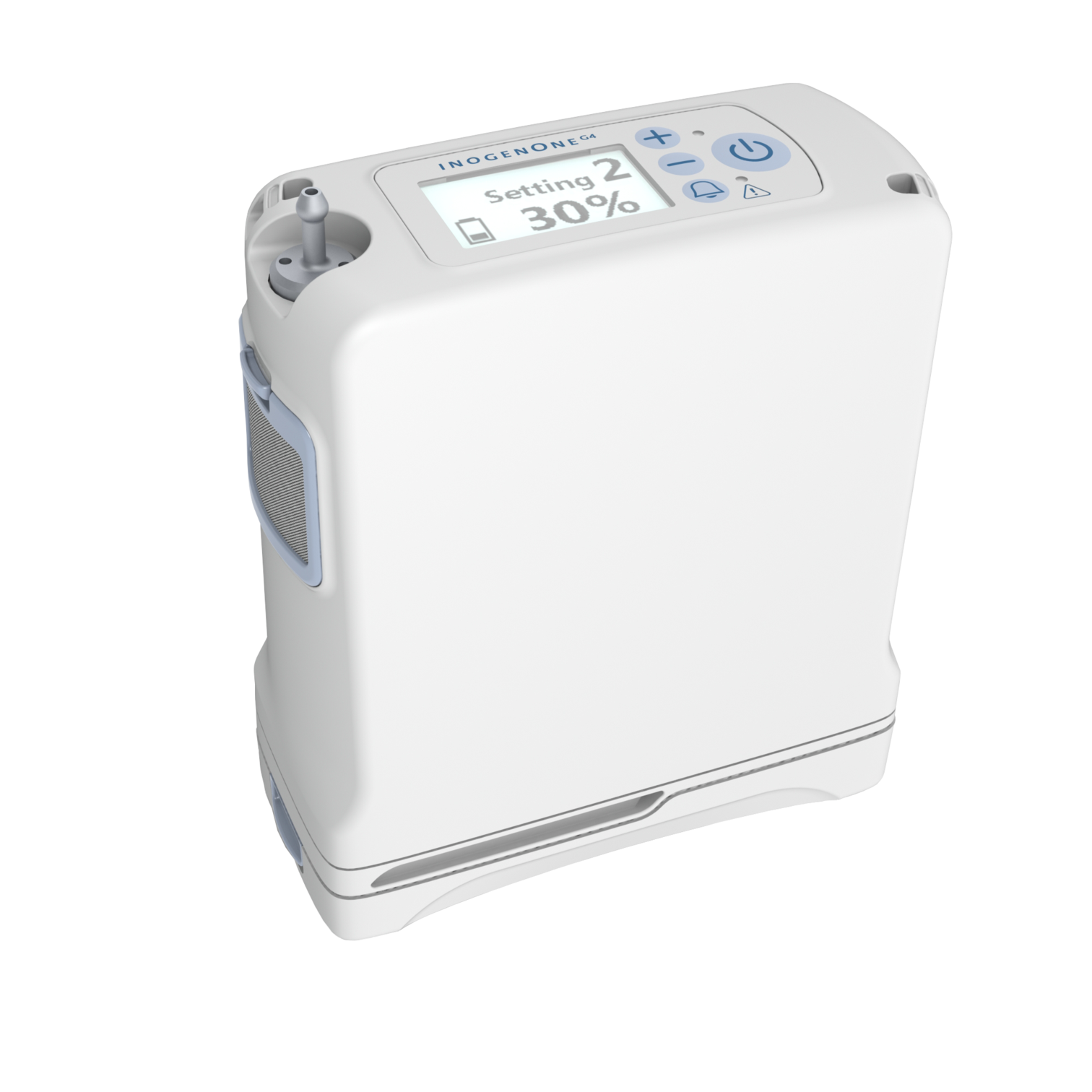
All oxygen devices push oxygen through tubing that connects to your nose so that you can breathe in the extra oxygen to treat the hypoxia caused by your disease. Portable oxygen concentrators operate very differently than an oxygen tank. Rather than getting your oxygen tank refiled every week, you simply charge the batteries.
Here is how Inogen systems work:
Purifies Air continuously
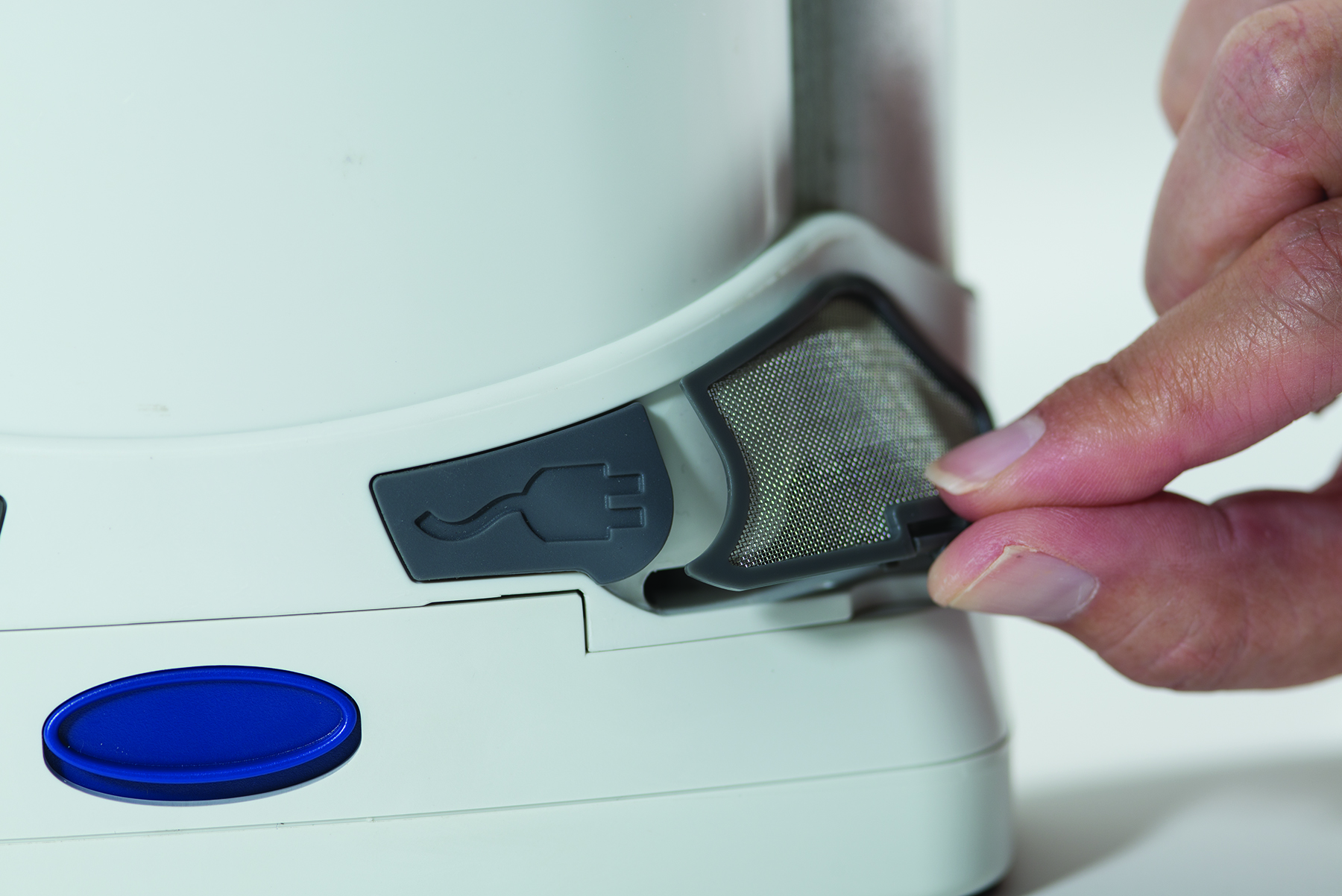
Similar to an air filter that you can leave in your home, your portable oxygen concentrator filters out impurities in the air before you breathe in the oxygen it is providing you. Inogen systems including the One G3, One G4, and One G5 all come with great filters that will extract particles from the air to ensure you are getting medical grade oxygen. Your filter should be replaced depending on how often you have to use your device, it is very easy to replace your own filter.
For example if you have the One G4, you can order a One G4 air filter, simply purchasing a new filter from LPT Medical, and calling 1(800)-946-1201.

By changing your filter when it becomes misshapen or when the screen is damaged the filters keep dust, pet hair, and other air-borne contaminants out of your oxygen.
The Inogen filters are washable and reusable so you don't have to continuously buy new ones. The best practice is to wash and dry your filters weekly, and if you use your device more often in very dusty environments, you can even clean it twice a week to help keep your concentrator working properly.
Removes Nitrogen to Deliver Oxygen-Rich Air
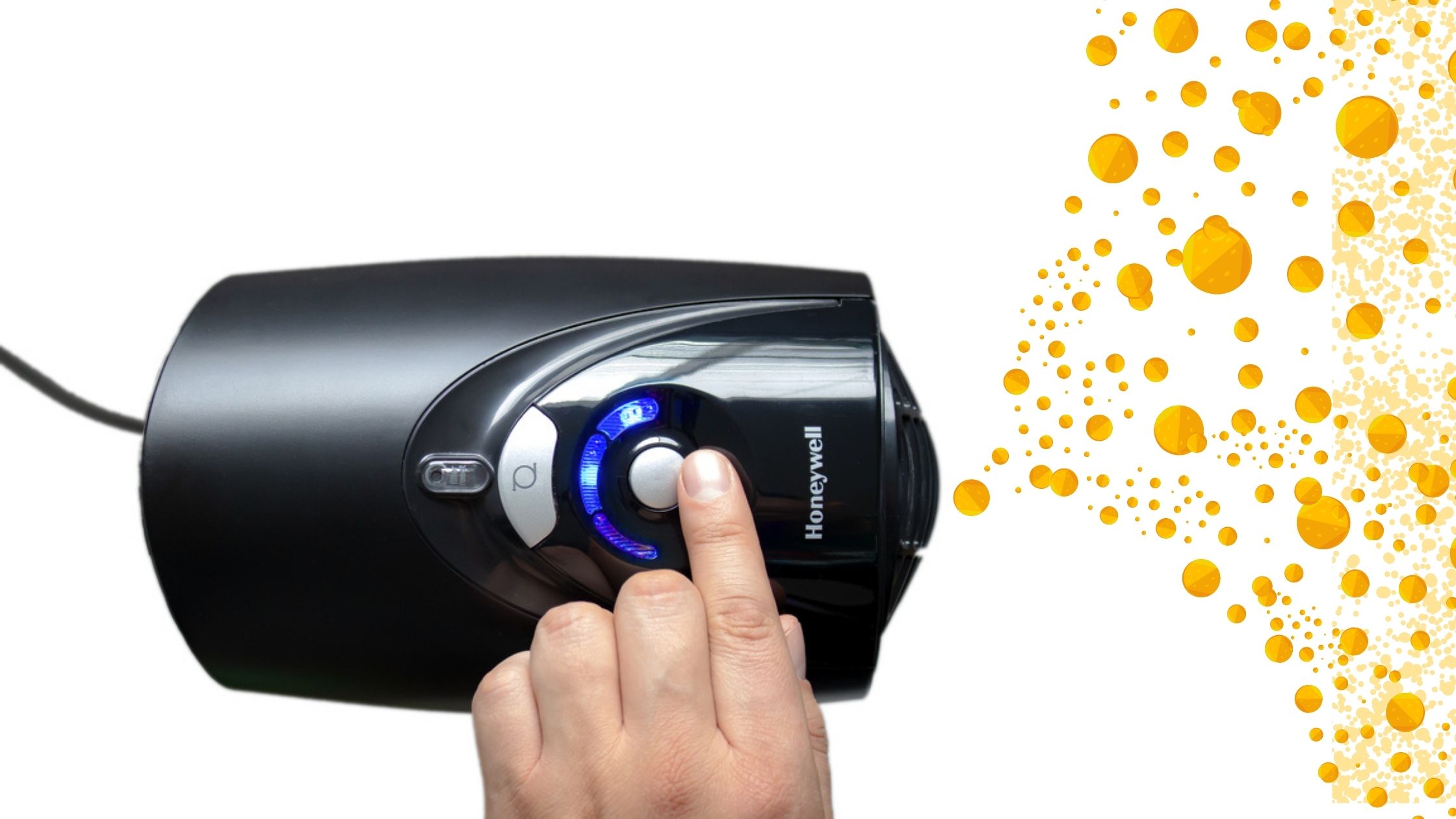
The air surrounding you that you breathe everyday is made up of 80% nitrogen and 20% oxygen. This level of nitrogen is not an issue for healthy people who have normal levels of oxygen in their blood. With your low levels of oxygen in your blood you will struggle with converting the nitrogen filled air into the pure oxygen your body needs.
This is why it is important for your oxygen device to take regular air and purify it to be 90-95% oxygen, with limited amounts of nitrogen.
{{cta('43b79c5e-6bd6-4f02-ac27-2d038d20c146','justifycenter')}}
To remove nitrogen from the oxygen you breathe you inogen oxygen concentrators goes through these three steps:
- Uses a compressor that moves air into sieve bed filters to remove the nitrogen
- Distributes the purified oxygen through hoses inserted into the nostrils
- The nitrogen is later released back into the air
Delivers Purified Oxygen Via Nasal Cannula
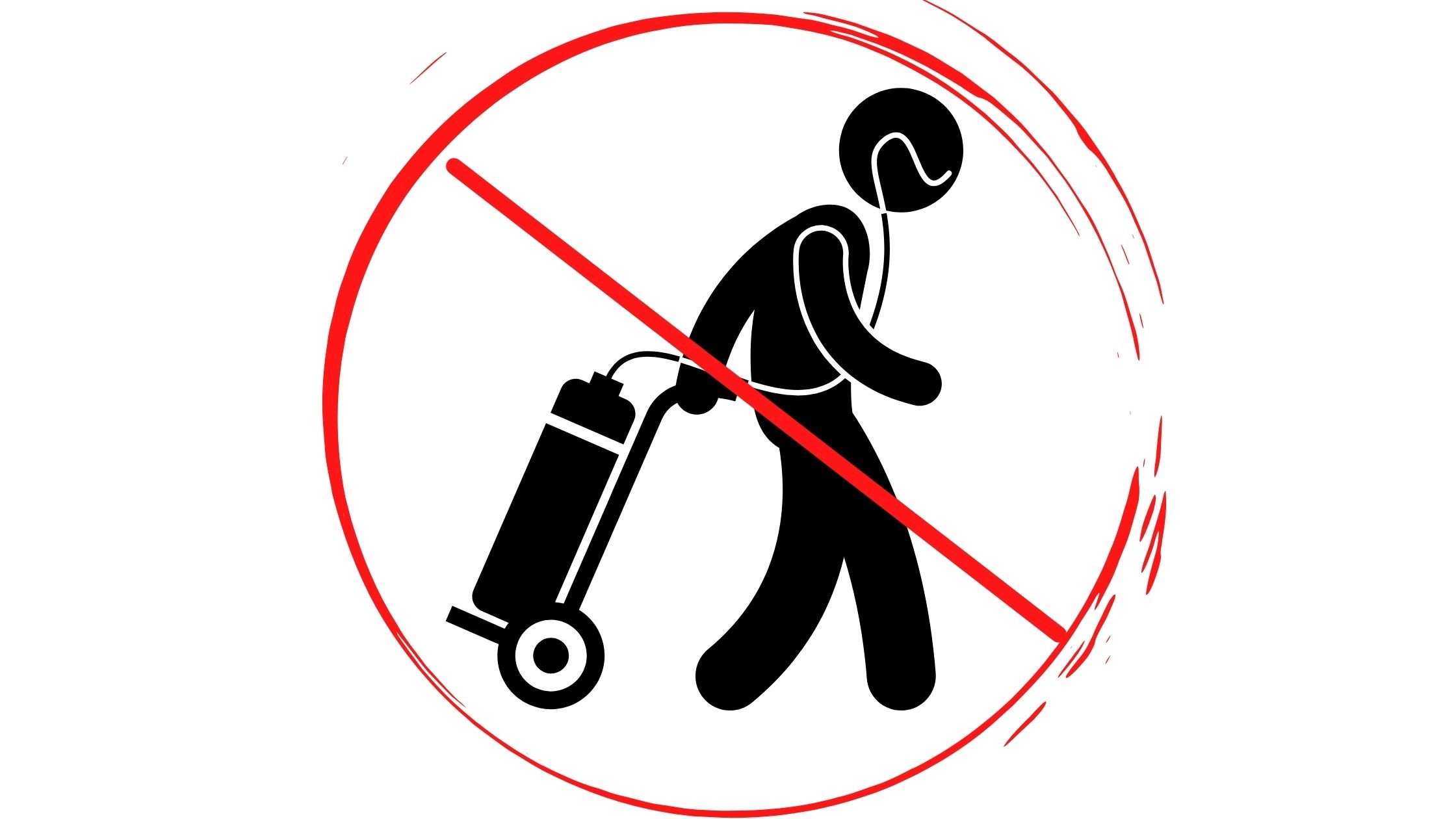

The nasal cannula is tubing that is attached to the oxygen device, and wraps around your head and the tubes are inserted into your nose. It is essentially a thin, plastic tube that has two small prongs at one end that rest in your nostrils.
The nasal cannula can comfortably deliver oxygen to a you at a setting of one to six liters per minute (LPM), but if you are breathing through your mouth it is possible you are not getting enough oxygen.
A study by PubMed concluded that, while mouth breathing doesn't always result in hypoxia, it can contribute to it.
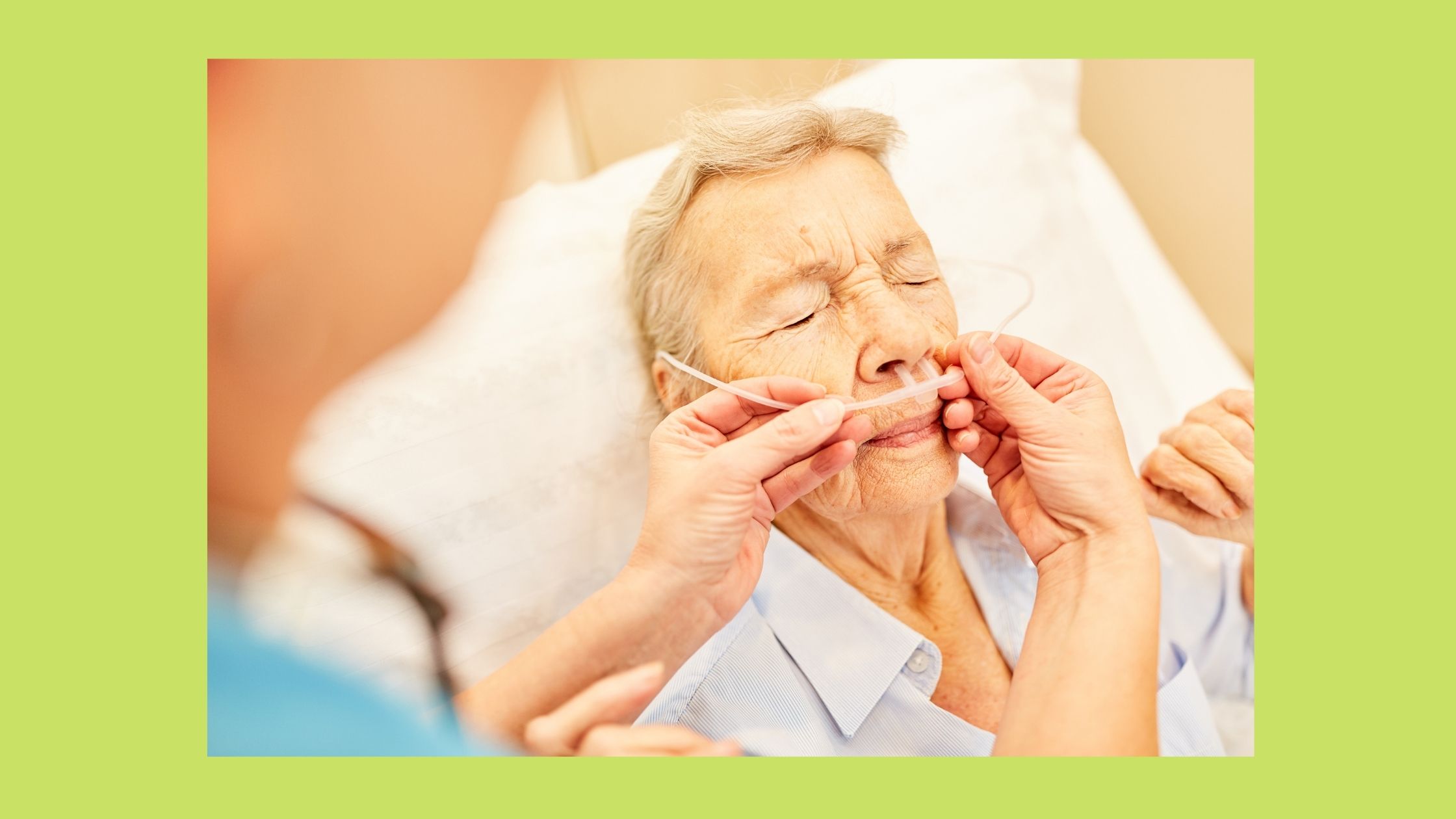
If you are a mouth breather and need supplemental oxygen it could be very beneficial to learn how to breathe through your nose.
Mouth Breathing with Oxygen Therapy
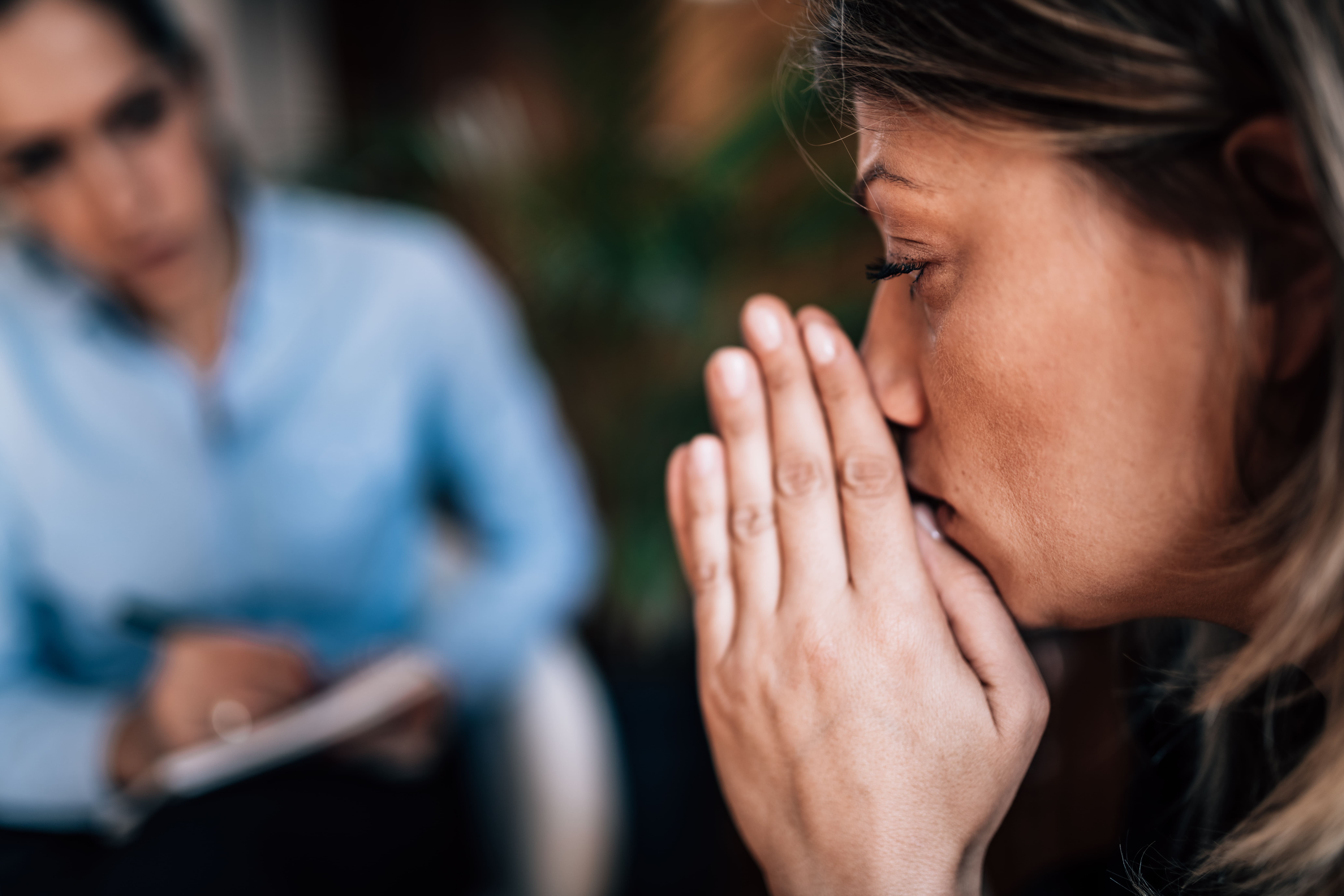
To address your mouth breathing, first try to figure out the cause, and what exactly is making you breath out of your mouth rather than your nose. Once you have accurately diagnosed this, you can address the treatment options which may include the following:
Clear Your Nasal Passages
You could be breathing through your mouth because your nasal passages are blocked. A stuffy nose could be attributed to seasonal allergies, illness, prior trauma, or even weather changes.
Over-the-counter antihistamines are available to reduce your allergy and cold symptoms and for a brief time, and open up your clogged nasal passages.
Saline nasal spray is another option you have to lubricate your nasal passages and relieve congestion.
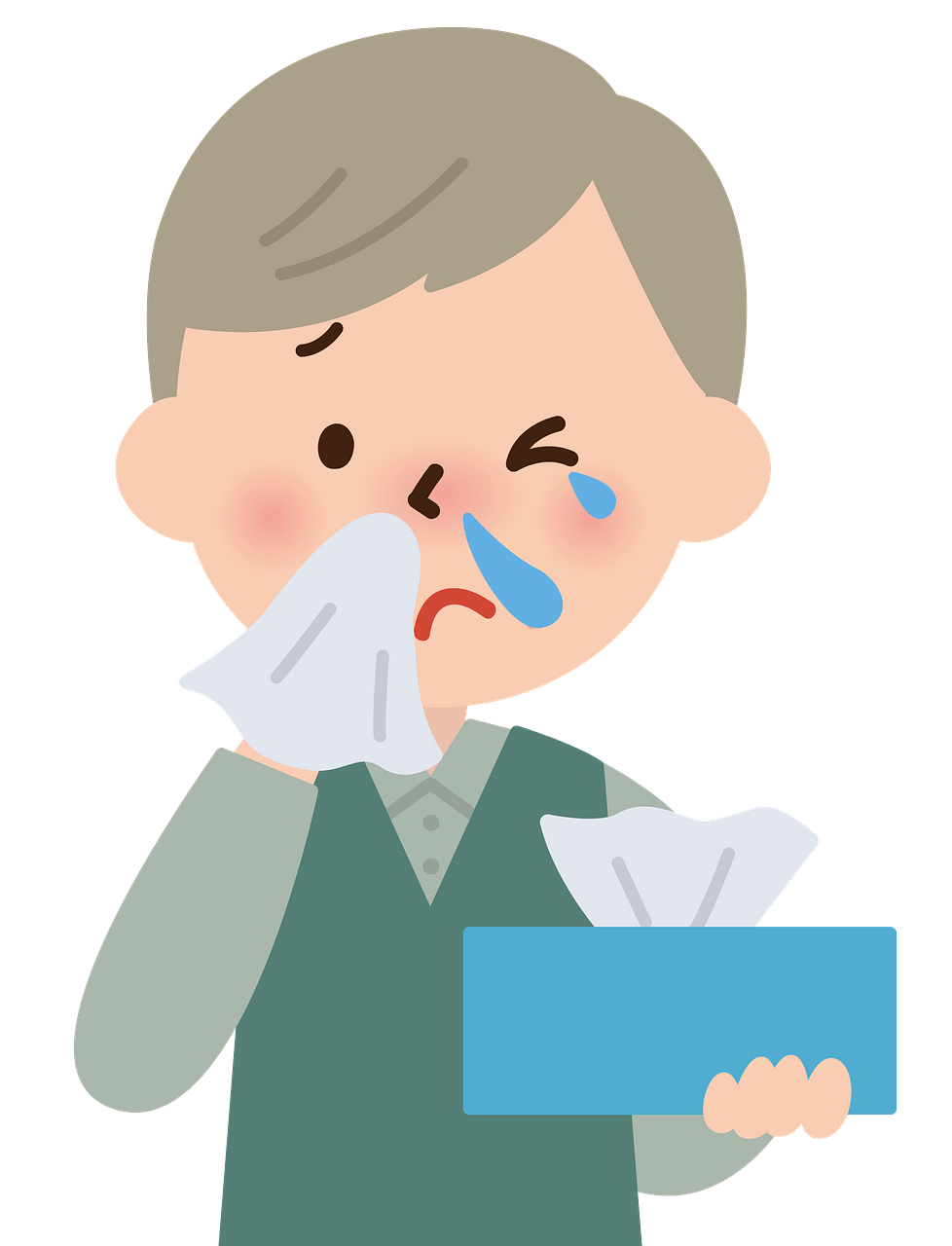
Go to the Dentist
Dentists can sometimes offer you more insight into why you are mouth breathing. It could be that a facial or dental abnormality is the cause of your mouth breathing and in this case they may fit you with a functional device to help correct the problem.
Switch from a Nasal Cannula to a Face Mask
The easiest solution to getting enough supplemental oxygen as a mouth breather, if deemed medically appropriate, is to switch to a face mask. Unfortunately, this is much more invasive for many people and must first be approved by your oxygen-prescribing healthcare provider.
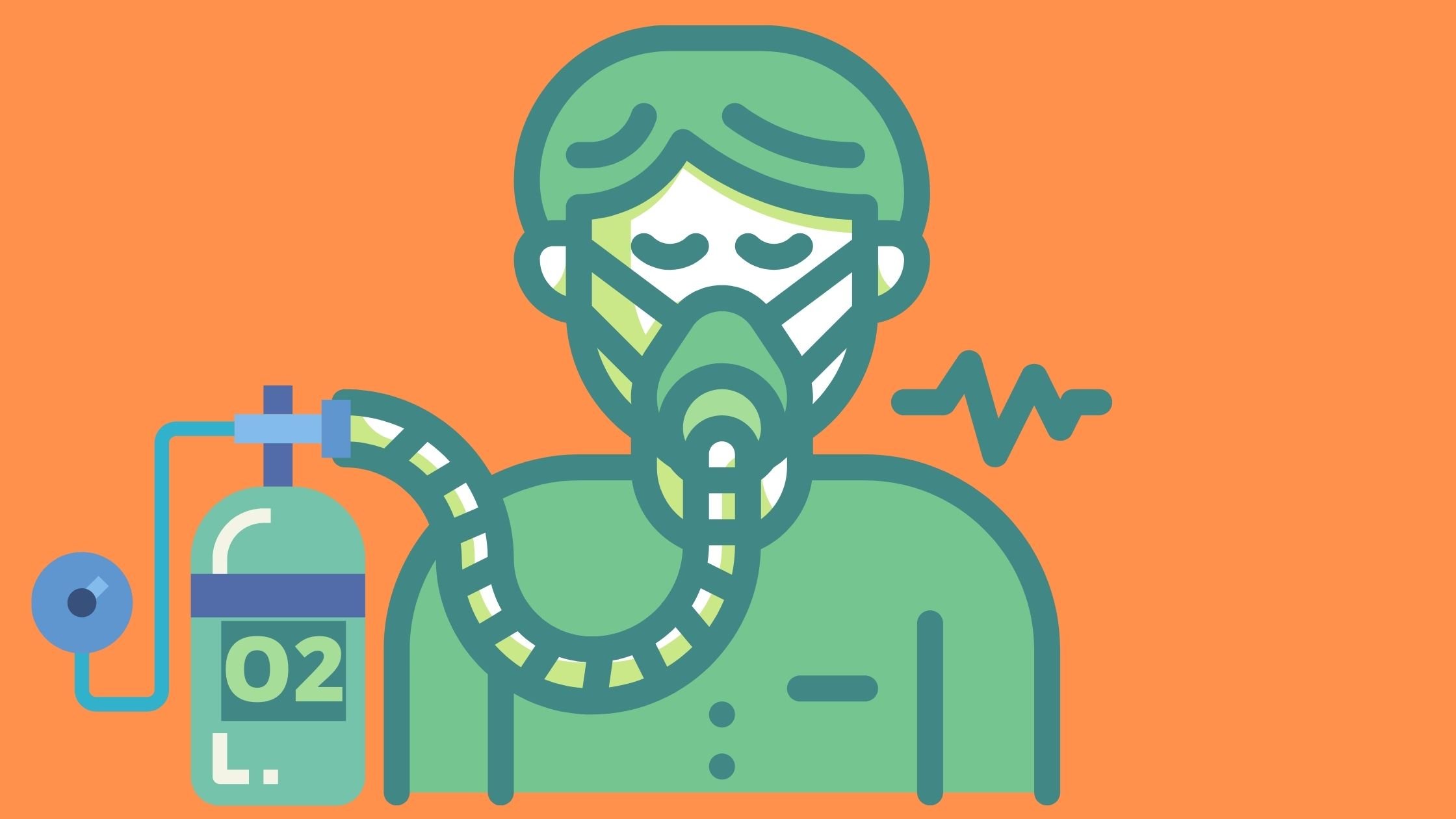
Another option is to consider using the nasal cannula during the day while you are out doing things, and switching to a mouth covering face mask at night. This way you are getting the full benefit of oxygen therapy while you are asleep.
Talk to your doctor about these alternatives to the nasal cannula.
Nasal Surgery
If you have a deviated septum your nasal passages are blocked all the time and you should consider talking to an Ear, Nose, and Throat (ENT) specialist about the surgery that may help correct the problem and allow you to breathe better.
Remember anesthesia can cause postoperative complications if you have COPD, so be aware of these risks before undergoing surgery.
Pulse Oximetry for Those on Supplemental Oxygen
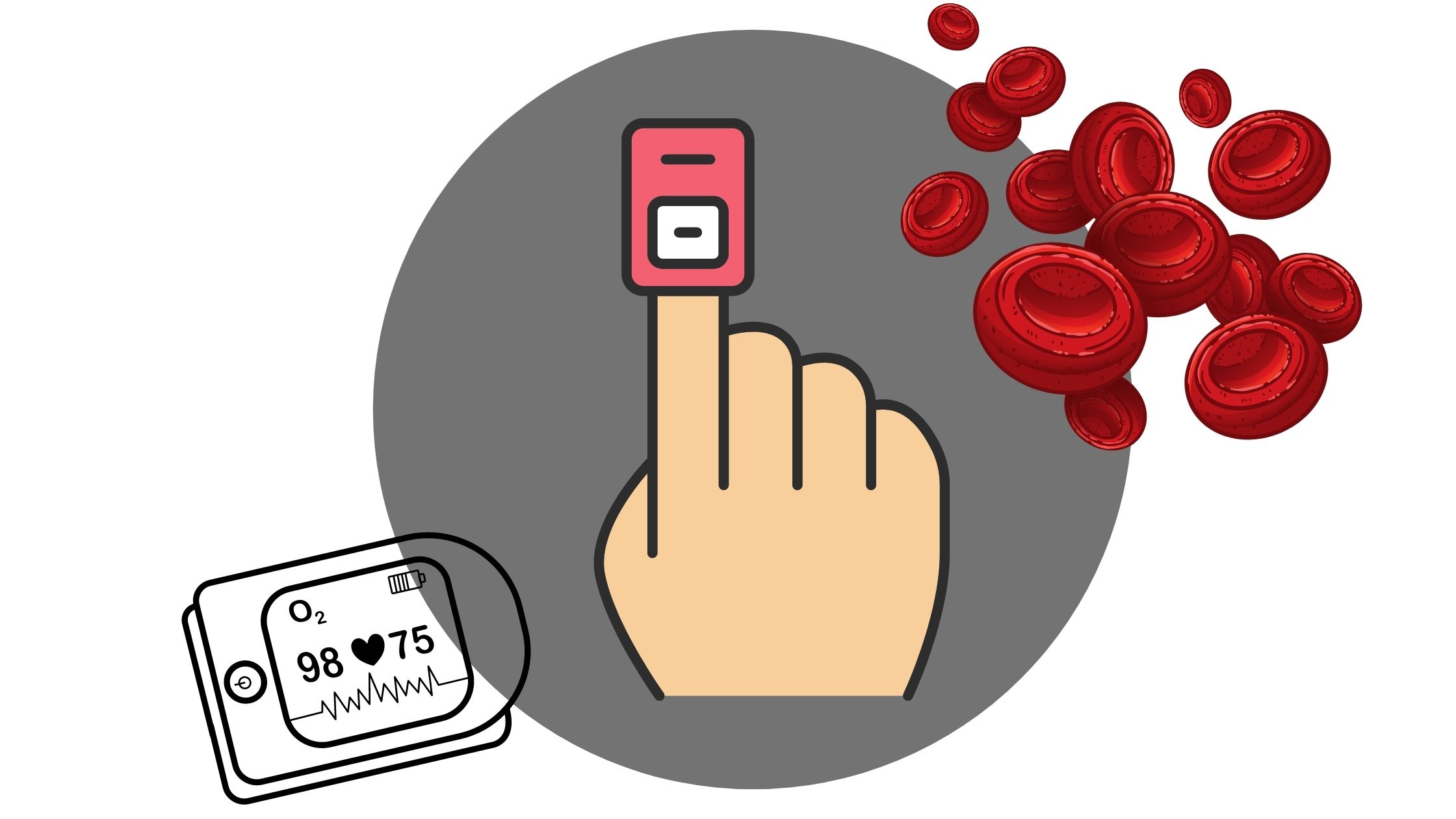
Despite your oxygen therapy method or device, having a pulse oximetry monitor is essential for anyone who receives oxygen therapy. Pulse oximeters can detect rapid changes in your oxygen saturation levels so that you are warned that you're low on oxygen. Knowing your oxygen saturation levels is a huge benefit and helps you treat you disease to the best of your ability
Powered by Rechargeable Battery and any AC or DC Power Source
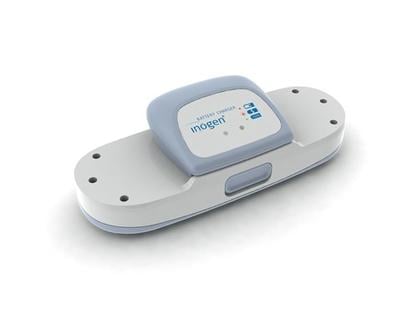
The most notable difference between traditional oxygen tanks and Inogen brand devices is how Inogen oxygen systems are all powered by rechargeable lithium ion batteries.
Having an oxygen device that will never run low on oxygen means a number of things. First, you will never wait around for your oxygen to be delivered, nor will you have to worry about paying for your new oxygen tanks every week.
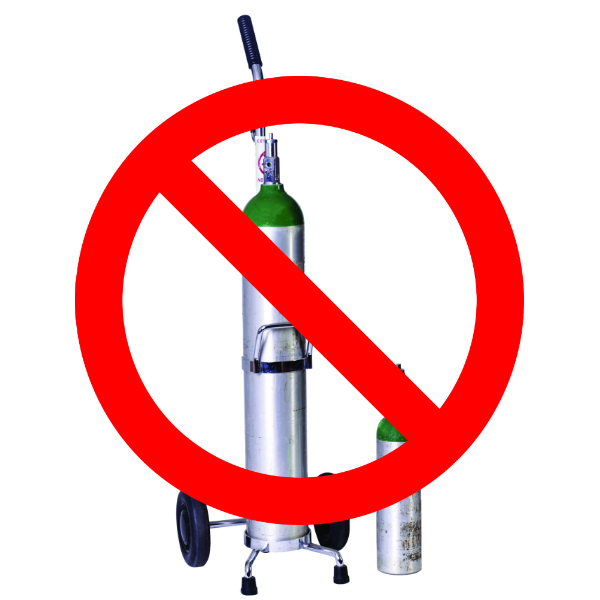
Instead, you can recharge your battery day or night, while you are using your device, in the car or on the move with an external battery charger.
You have the option to go with the smaller 8-cell battery or buy a larger 16 cell battery when you order an Inogen One G3 One G4, or One G5. The 16-cell battery lasts longer, and it is just slightly heavier.
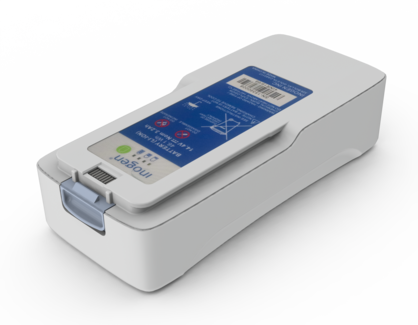
The 8-cell battery is no additional cost and comes with the purchase of any Inogen oxygen concentrator when you purchase from LPT Medical at 1(800)-946-1201!
With a battery powered device you have the ability to take your oxygen system on a plane with you and travel to your destination stress free. You will no longer have to rent oxygen and spend valuable time and money finding a palace to rent oxygen while you are away from home.
Read our blog about traveling with your supplemental oxygen in 2021.

Out of all of the Inogen systems, our best selling device is the Inogen One G5, and here is why:
Inogen One G5
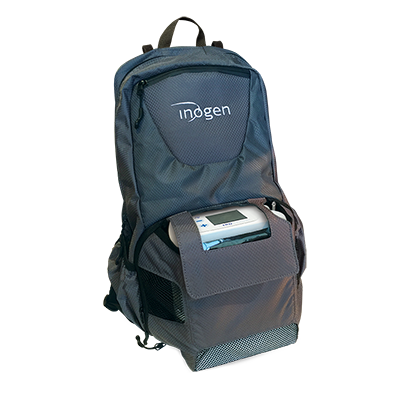
The Inogen One G5, is the most advanced Inogen system so far, it has six pulse flow settings— The amount of oxygen the One G5 can administer while maintaining the compact and lightweight design in comparison to the earlier generations is outstanding. This extra level of oxygen output gives more people who use oxygen therapy the ability to take advantage of lightweight portable oxygen devices.
If you have a lower flow of oxygen you may not see this as an immediate benefit, however having the option to increase your oxygen output is always better. As ailments worsen or your condition progresses, you may need to increase your oxygen output.
For example, if you have a chronic lung condition like COPD your prescription may be suited to a three-level flow setting, but your need for oxygenation could increase to a six while exercising, or in the case of an emergency while you are experiencing a COPD exacerbation.
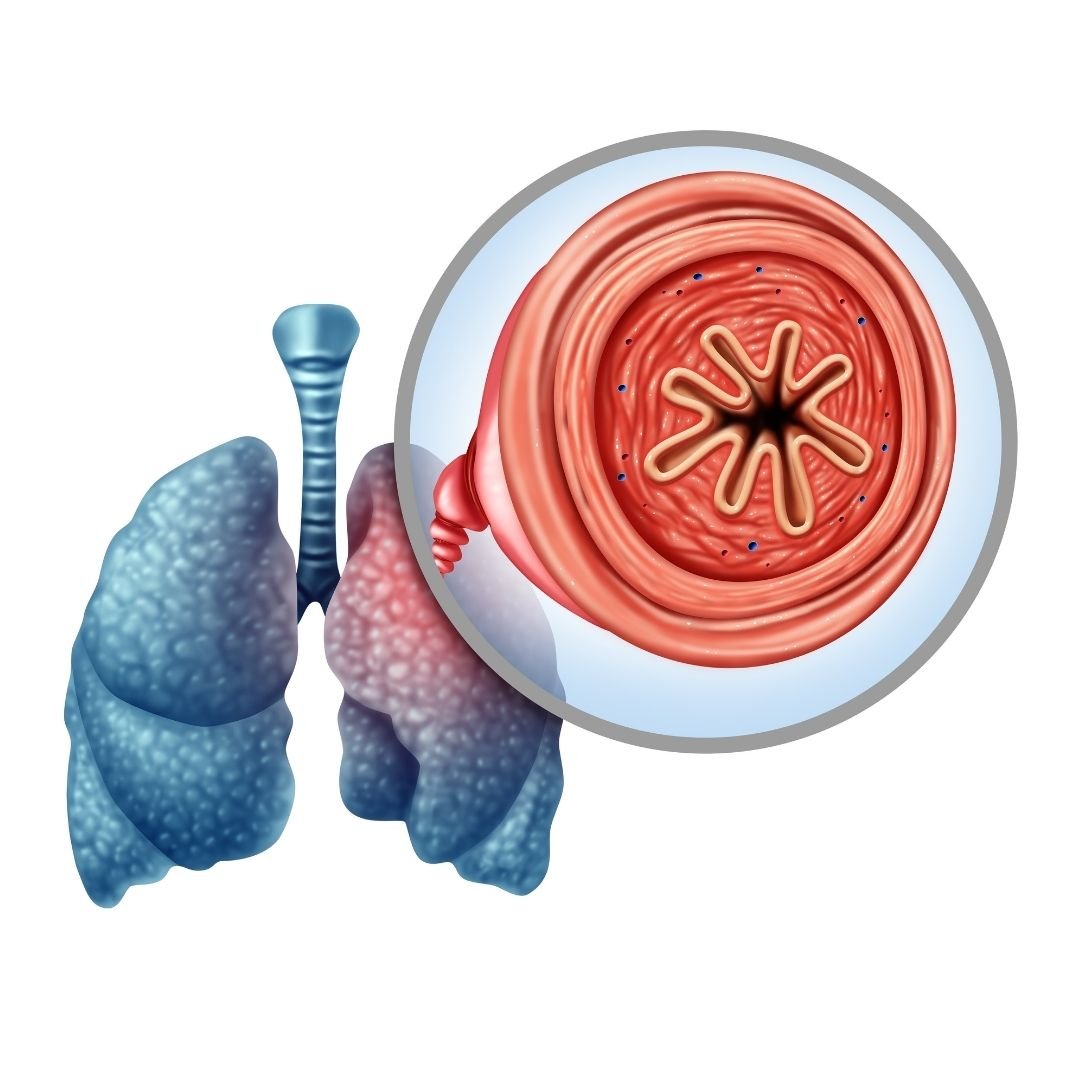
One common issue you might have with oxygen concentrators in the past is their noise, which can be loud enough to impact a good night’s sleep. However, Inogen has improved upon their previous models, and the One G5 is only 38 decibels while on a level two setting, which is quieter than other Inogen One units.
38 decibels is rated as a soft sound, and typically it will not impede on your day-to-day activities, and it may just help you sleep a little better.
The One G5 unit weighs less than five pounds, which for some people may actually be too heavy to carry around all day, and that is why it comes with a One G5 custom carrying case, and you have the option to buy a One G5 backpack. The backpack can hold extra items when you are out running errands or playing a round of golf!
The One G5 also offers an amazing battery; you’ll have the option to get an 8-cell battery or a 16-cell battery. With the 16-cell battery on a setting 3 you will have power in your device for 7 hours! It is not only a great portable unit to carry around all day but it is also Federal Aviation Administration (FAA) approved meaning that it’s an excellent option if you are eager to travel.
Overview
It is clear why Inogen oxygen devices are so popular, they work well and for many different kinds of oxygen patients, but they are also durable and last a long time.
If you are interested in learning which generation of Inogen One concentrators will work better for you and within your budget, give LPT Medical a call, and our respiratory specialists will help you, and work with your doctor to find the right oxygen device for you.
.png)
Supplemental oxygen therapy is a foundational part of most COPD treatment plans. The ultimate goal of oxygen therapy is to provide the lungs with a higher concentration of oxygen which helps ensure that your blood oxygen levels remain normal. While most COPD patients need to use supplemental oxygen at some point in their lives, the experience tends to vary from person to person.
If you’ve been on oxygen for some time, you know that there are good days and there are bad days. One day, everything may be working exactly as it should and you forget that you’re even on oxygen. However, the next day, you might experience discomfort with your nasal cannula, dryness in your nose, equipment failure, or any other number of issues. It’s during times like these that we begin to wonder if supplemental oxygen is too intrusive to be worth our time and effort.
{{cta('fa8abc2a-1e88-4fa3-82fd-1cb5b9ed43b2','justifycenter')}}
And while it’s true that oxygen therapy can be intrusive sometimes, the alternative can be far worse. Having low blood oxygen levels (hypoxemia) for prolonged periods of time can have devastating effects on the body including breathlessness, dizziness, confusion, and eventual organ damage or failure. Your body absolutely needs oxygen, so if you’re thinking about reducing your oxygen flow, be sure to consult your physician beforehand.
To help you cope with the unpredictability of oxygen therapy, we’re going to offer seven tips to get you back on the right track and experience peace of mind again.
Start With Choosing the Right Oxygen Device for Your Needs
If you get the sense that oxygen therapy is always an uphill battle, there’s a good chance that you have the wrong oxygen device for your needs. Unfortunately, the greatest strength of the oxygen industry is also its greatest weakness — there are too many options. Traditional oxygen tanks, liquid oxygen tanks, stationary oxygen concentrators, and portable oxygen concentrators are just a few of the options out there. And even once you decide which one is best for you, you’ll have many different brands and devices to choose from, all of which vary greatly in terms of what they offer the patient.

Take traditional oxygen tanks, for example. These devices have been around for many decades and they’ve provided millions of COPD patients with reliable oxygen. However, since the early 2000s, they’ve become nearly obsolete due to technological advancements in the oxygen industry. While oxygen tanks are still popular, most people prefer having a portable oxygen concentrator instead. Rather than being heavy, bulky, and intrusive like oxygen tanks, portable oxygen concentrators are ultra-lightweight, comfortable, and convenient. And most importantly, they provide patients with reliable medical-grade oxygen.
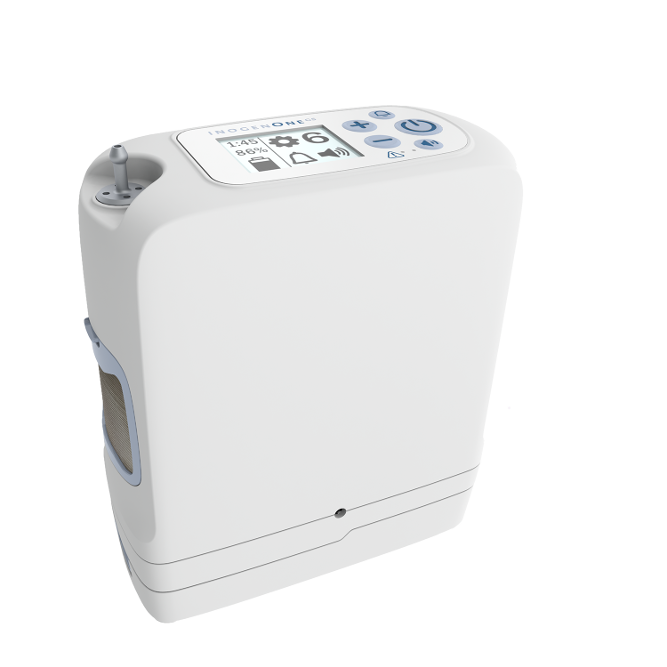
One of the most popular types of POC is a pulse dose POC. These concentrators closely track your breathing rate and administer oxygen only when you’re inhaling. In other words, your concentrator battery will last much longer than it would with a standard continuous flow concentrator because it isn’t having to constantly work to put out oxygen. The Inogen One G5 and the Caire FreeStyle Comfort are two of the most popular pulse dose units because they both weigh under 5 pounds, they have low failure rates, and they’re backed by some of the most reputable brands in the industry.
Choosing the Right Nasal Cannula
Aside from having the right concentrator, having the right nasal cannula is one of the best things you can do to make supplemental oxygen less intrusive. The nasal cannula is the part of the oxygen tubing that allows the oxygen to flow freely into your nose so that you can inhale it. However, as you can imagine, it can be quite annoying having the cannula in your nose all the time. Many people report experiencing irritation or dryness in their nostrils. Also, many people report experiencing irritation on their ears where the oxygen tubing rests.
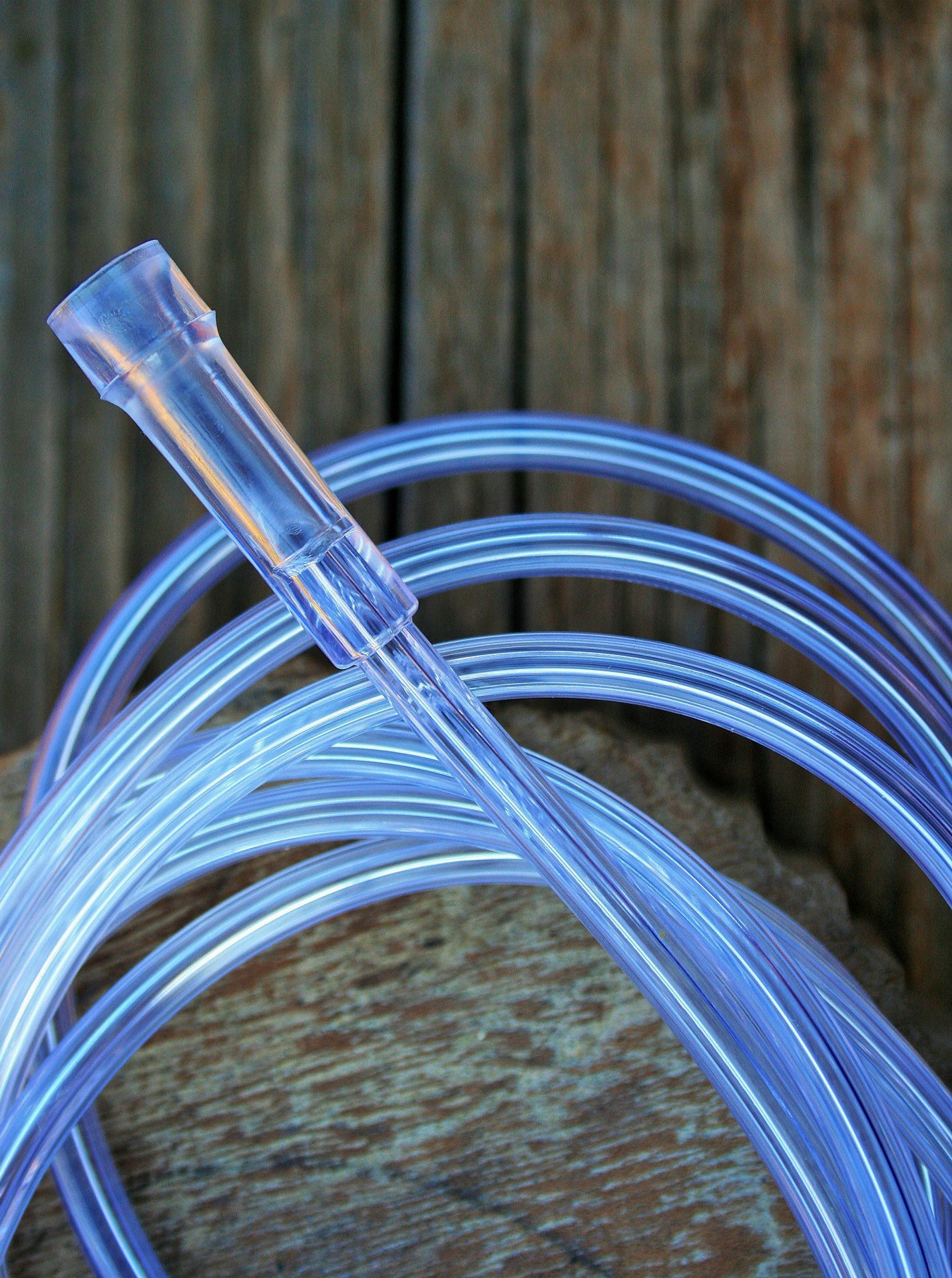
The simplest solution to this problem is to use an ultra-soft nasal cannula that isn’t as abrasive as the standard cannulas. Many oxygen concentrators also have the option to add a humidifier to the device which prevents the nostrils from drying out after extended periods of use. There are also many different types of nasal sprays and lubricants on the market that you can apply before and after using your oxygen concentrator. However, be sure not to use petroleum-based skin products because these are highly flammable and will be made even more flammable as medical-grade oxygen is applied.
Find the Right Oxygen Accessories for Your Lifestyle
Everyone has a different lifestyle. Some people prefer to stay at home while others prefer to be out of the house as much as possible. So, it goes without saying that not everyone has the same oxygen needs. The amazing thing about portable oxygen concentrators is that they can be customized to different lifestyles with the use of different accessories. For example, if you own the Caire FreeStyle Comfort, you’ll be able to choose between the standard carrying case and the backpack. The former is better for people who want to minimize the amount of weight they’re carrying while the latter is great for anyone who wants to carry a lot of extra personal belongings.

Another decision you’ll have to make is what size of batteries you will need. Most portable oxygen concentrators out there come with several different sizes of battery and you can make a decision based on how long you typically stay out of the house. For example, the Inogen One G5 offers two different battery options — 8-cell and 16-cell. If you just take a quick trip out of the house to go to the grocery store, you might only need the 8-cell battery. However, if you travel around a lot, you might want the 16-cell battery which offers about twice the battery life.
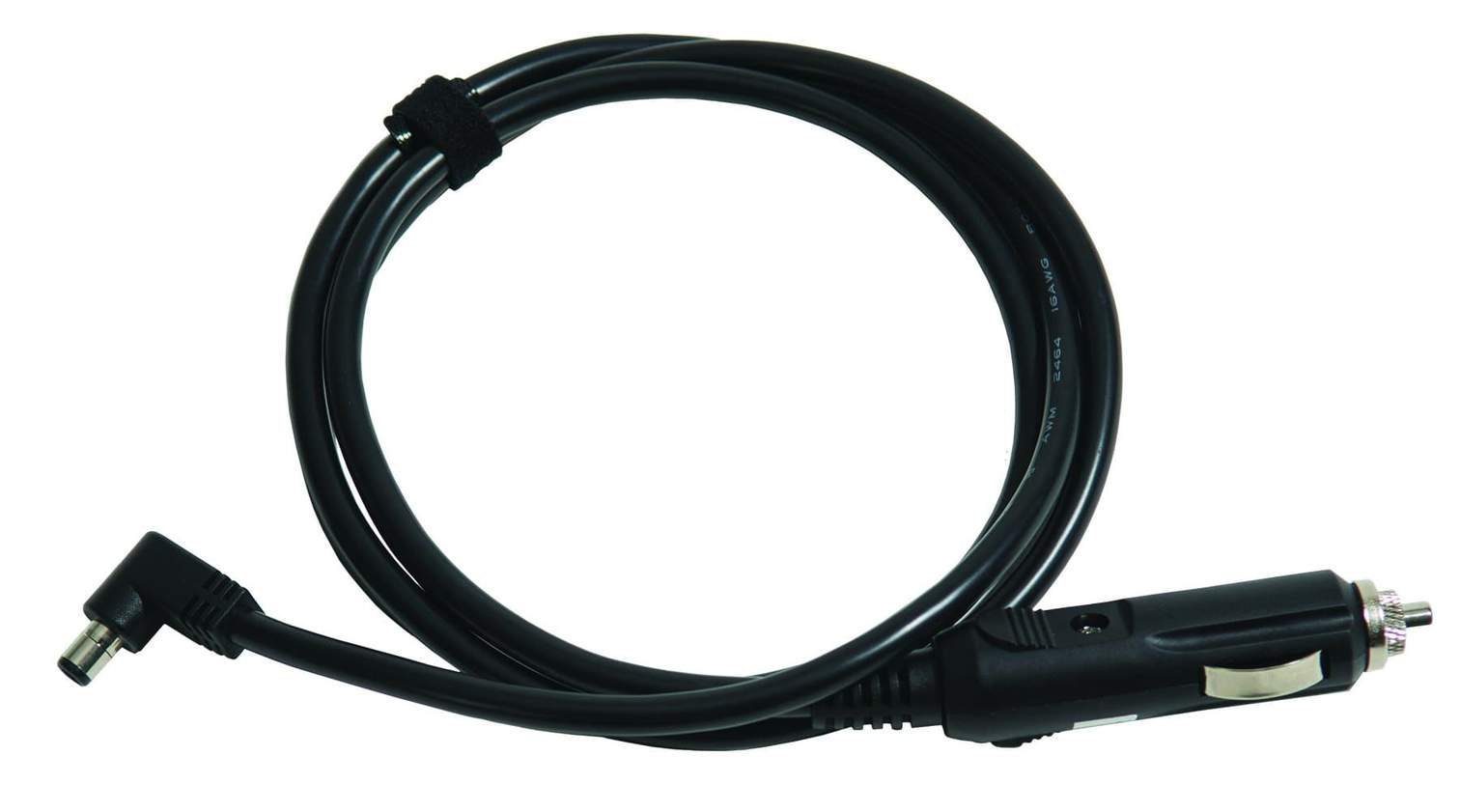
If you’re someone who likes to take road trips, a DC charging cable is a must-have accessory. DC charging cables allow you to charge your POC via a car outlet which is incredibly handy if you’re going to be in the car for hours on end. The best part is that many POCs can be used while they’re charging, so whenever you leave the car to sightsee, you’ll have a fully charged battery to work with.
Take Some Time to Read the User Manual
Think of your portable oxygen concentrator user manual as your all-in-one guide for using your new device. It will teach you everything you need to know from turning the device on to adjusting the flow rate and understanding the different visual and audible alarms. While it may be tedious to sit there and read through the whole manual in one sitting, you should at least sift through it in order to learn the basics of how to operate it. This way, if you’re out of the house, you won’t be left to wonder what a specific button or function does.
{{cta('b59df0c1-c4de-47a8-8e1c-0d33d4b414aa','justifycenter')}}
Another important thing you’ll learn from the user manual is how to troubleshoot your portable oxygen concentrator. Troubleshooting refers to the steps that you take if something should go wrong in order to remedy the issue. You’ll be surprised to find that the majority of issues that portable oxygen concentrators have can easily be solved with a quick fix. Since POCs are electronic devices like computers, simply turning the device off and then on again can solve a lot of issues, so it’s often the first thing you should try when something goes wrong.
Keep Up With Device Maintenance
Like with any oxygen therapy device, it’s important to take care of your portable oxygen concentrator. The good news is that maintaining a POC is much easier than many people realize and it won’t cost you an arm and a leg to do it either. One thing you should do regularly is clean your device. As you can imagine, when you’re carrying your POC with you everywhere, it can start to gather dirt and germs which could make you sick or even damage the device. Simply wipe your device down with a disinfectant wipe once or twice a week and make sure you don’t get any of the electrical components wet. You should also be sure to take off the particle filter occasionally, wash it off, and replace it because this protects the internal components of the POC and also purifies the air you breathe.

Two other components you should replace regularly are your nasal cannula and your sieve beds. The nasal cannula needs to be replaced regularly because it can get worn out over time and starts to get really dirty. The sieve bed is a special filter inside your POC that removes specific gases from the air like nitrogen which enables you to receive medical-grade oxygen. If the sieve beds are in poor condition, you may not be receiving the oxygen you need to stay healthy. Every device is different, but generally speaking, you should replace the sieve beds every year or two. Ideally, your nasal cannula should be replaced every two weeks.
Plan Your Trips Carefully
You would not be making full use of your portable oxygen concentrator if you didn’t get out of the house and enjoy the freedoms that you used to before starting oxygen therapy. There are near endless possibilities when you own a POC, but it’s still important to be prepared every time you leave the house. For example, if you leave the house without fully charged batteries, you might find yourself in a difficult situation where you either have to find a place to recharge them or return home earlier than expected. The best way to prevent this is to always know how long you will be out of the house. Make sure you have enough battery life to get you through the day plus a few extra hours to account for any change of plans.
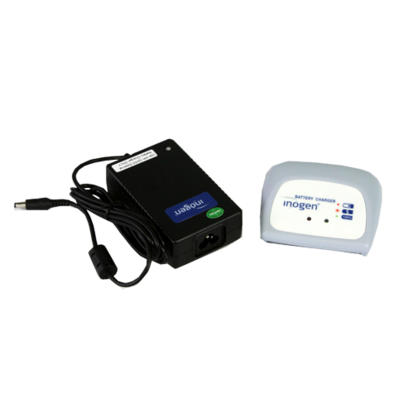
One thing that’s really handy to have on long trips away from home is an external battery charger. Most portable oxygen concentrator batteries need to be attached to the unit in order to be charged. This means that you can only charge one battery at a time. However, with an external battery charger, you’ll be able to charge two batteries at once. This is very useful if you’re going to be on the go a lot and don’t want to sit around waiting for your batteries to charge.
Speak With Your Doctor
Last but certainly not least, you should speak with your doctor if you’re having trouble incorporating oxygen therapy into your life. Your doctor should be the first person you contact if you’re thinking about making changes to your oxygen treatment plan because he/she will be able to tell you whether or not it is safe to do so. Many people believe that if there are no immediate symptoms caused by reducing their oxygen flow, then it’s safe to do so. Unfortunately, this is not the case. Although you may feel fine at first, prolonged hypoxemia can cause a lot of harm to your body including dizziness, confusion, and even organ damage. By talking to your doctor you may be able to work out a treatment plan that takes into consideration both your comfort and your long-term health goals.
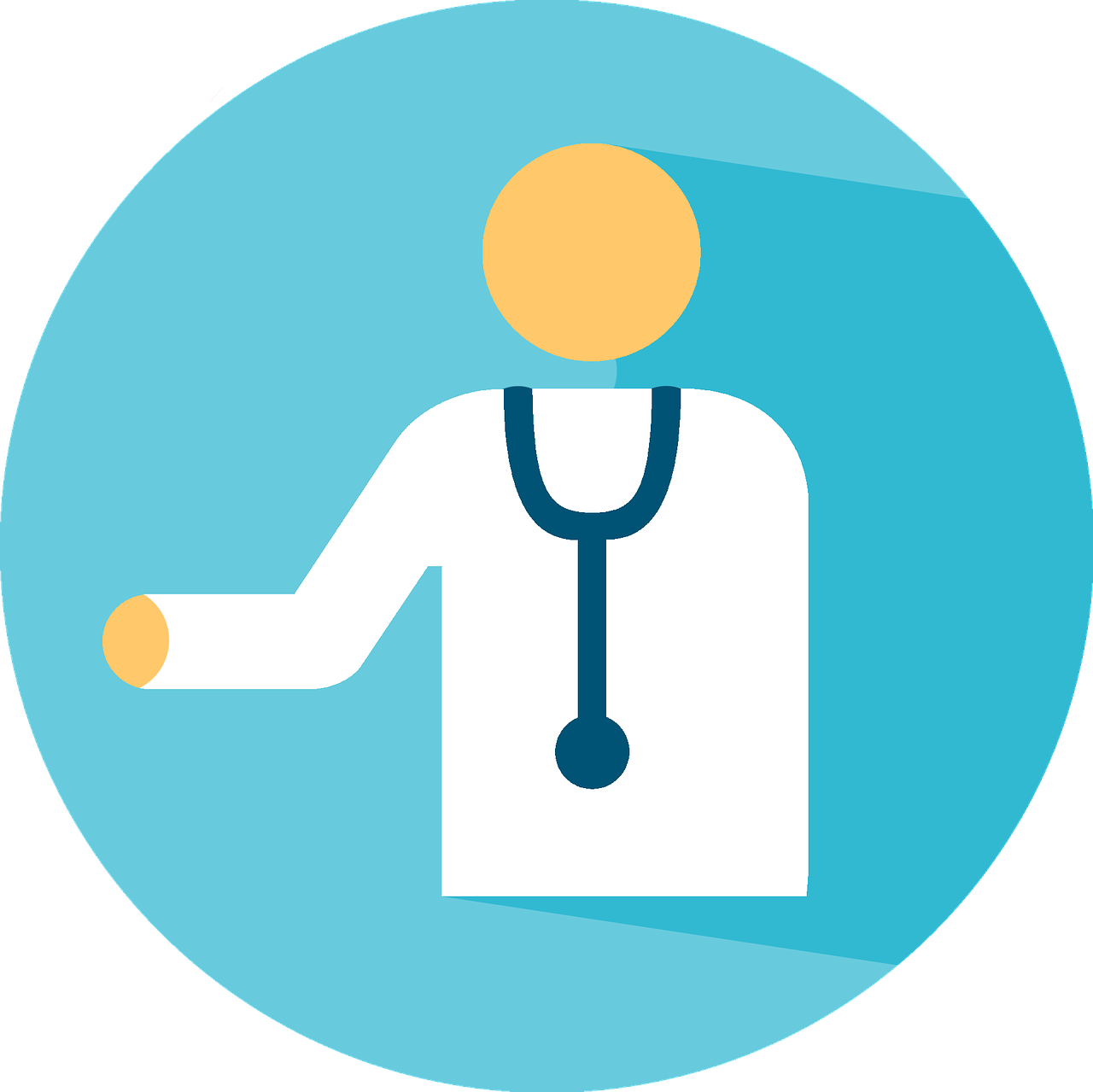
Conclusion
Having a reliable supply of medical-grade oxygen is essential for any COPD treatment plan. Unfortunately, many people end up purchasing the wrong oxygen device for their needs and find that it’s too intrusive for it to be worth their time and effort. This is why it’s recommended that COPD patients use small, lightweight, and convenient portable oxygen concentrators like the Caire FreeStyle Comfort or the Inogen One G5. After using a POC for the first time, many patients realize that oxygen therapy doesn’t have to be intrusive or cause stress in their lives.
Here at LPT Medical, we take your oxygen needs very seriously. We don’t want you to be stuck with an oxygen device that you’re unhappy with or that isn’t meeting your needs. This is why we have a team of oxygen concentrator specialists who will take the time to understand what you’re looking for, then align you with the oxygen device that will best suit your individual needs. We also have a number of financing and buying options available. Contact us either by phone or email to learn more.
.png)
No matter what stage of life you are in, it’s always a good idea to find new ways to save money. If you’re someone with chronic obstructive pulmonary disease (COPD) or a similar lung disease, one of the best ways you can cut costs is by looking for ways to save money on medication, medical equipment, and other medical expenses. This study found that the average annual healthcare cost per COPD patient is around $4,147 and that increased disease severity is associated with higher healthcare costs.
Unfortunately, many people find that it’s not as easy as they thought it would be to save money on medical expenses. While there are many ways to save on medications, things like doctor’s visits, hospital visits, and pulmonary rehabilitation are pretty set in stone. And trying to avoid these things all together to save money could put your long-term health at risk. Be sure to visit a medical specialist whenever you need to, and find other ways to save such as on your medical oxygen equipment.
{{cta('fa8abc2a-1e88-4fa3-82fd-1cb5b9ed43b2','justifycenter')}}
If you’re just getting started with oxygen therapy, it might not be immediately evident how many options you have available to you and that just a few considerations could save you hundreds, if not thousands of dollars when it comes to purchasing and maintaining your oxygen device. In this post, we are going to highlight some tips for getting the best deal on an oxygen concentrator and avoiding some of the common pitfalls many people experience as a first-time oxygen buyer. If you have any questions, be sure to leave them in the comments or reach out to us by phone or email.
Find the Right Retailer to Buy From
By far the most important thing to remember if you’re looking for a good deal on an oxygen concentrator is to find a reputable retailer to buy from. The internet has made it easier than ever before to find the exact product you’re looking for and have it delivered on your porch within a matter of days. However, the internet has also opened the door for scammers and dishonest companies to get your money. This is why it’s so important to be prudent when it comes to the company that you work with.
![]()
Possibly the biggest scam you should be aware of when buying oxygen is companies that don’t ask to see your supplemental oxygen prescription. In the United States, oxygen is a “controlled substance” meaning it can’t simply be bought and sold freely without proof of medical necessity. If a company sells you oxygen without having you provide a prescription from your doctor, they are either doing so illegally, or they’re selling you low grade oxygen that will not meet your medical needs. Either way, these are deceptive business practices and they could be deceiving you in other ways as well.
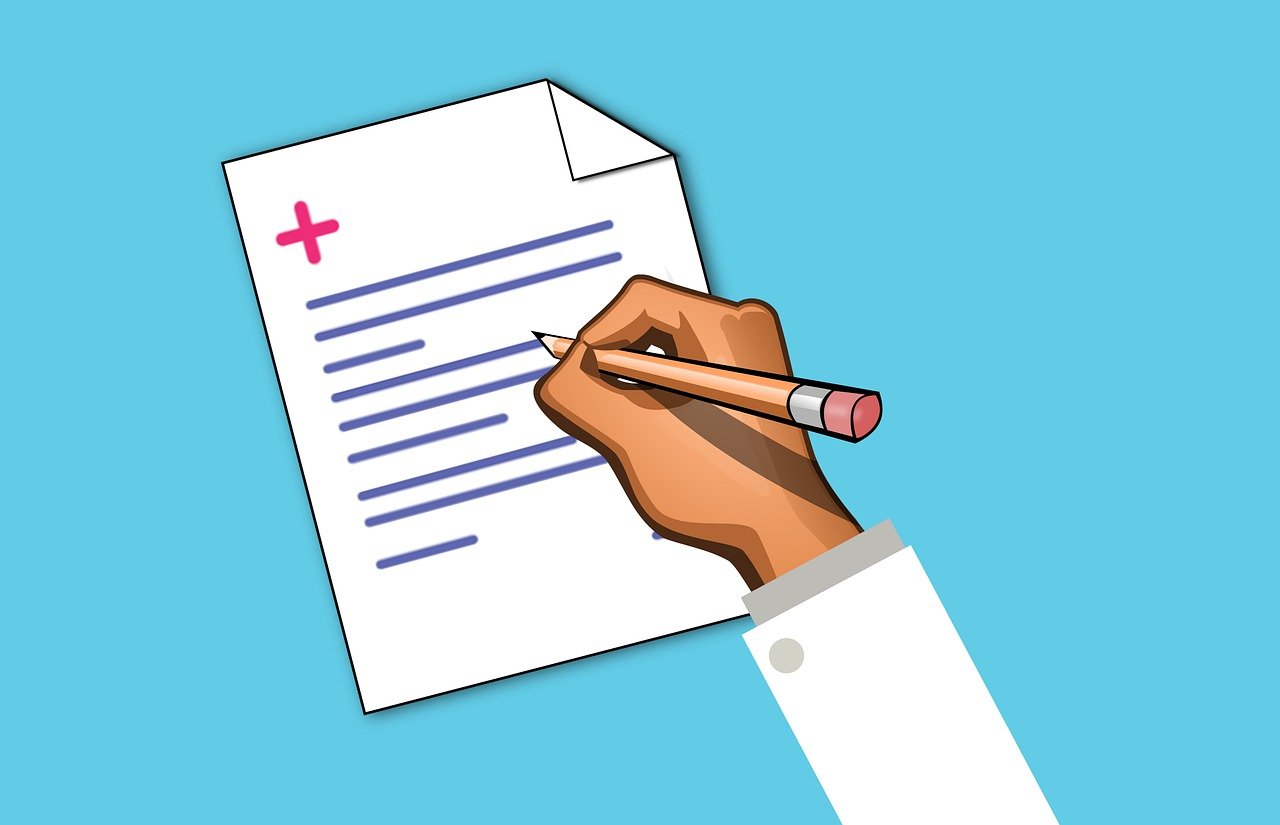
Another thing to watch out for is something called “recreational oxygen.” This is not necessarily a scam or deceptive but it can lead to confusion when you’re trying to buy an oxygen concentrator to treat your COPD. Essentially, recreational oxygen is a type of low-grade oxygen used by hikers, climbers, or people traveling to higher altitudes than they’re used to. Allegedly, using these cylinders periodically can help you prevent breathlessness and altitude sickness, but there is little evidence to suggest this is the case. The important thing to remember is that “recreational” oxygen does not equate to “medical” oxygen.
.png)
Ultimately, the reason you should focus on finding a reputable oxygen retailer to work with is because purchasing the wrong device will set you back even further financially. Many people are ecstatic to find an oxygen device for a couple hundred dollars only to find out that it’s not going to meet their medical needs and that the company they bought it from doesn’t accept returns. Aside from breaking the bank, buying an oxygen device from a shady company can compromise your health and leave you without oxygen when you need it the most.
Decide Between New, Used, and Refurbished
Another way to get a great deal on an oxygen concentrator is to consider different buying options like new, used, and refurbished units. We wrote a post discussing all of the different buying options for portable oxygen concentrators in a different post, so be sure to check it out for more information. However, we’ll summarize the main points here for your convenience.
A “new” oxygen concentrator is one that has never been opened, turned on, or used in any way since it was manufactured. The obvious benefit to having a new concentrator is that the unit has no wear and tear and that you can expect it to last many years without needing repairs. What’s more, most new concentrators come with a manufacturer warranty which will cover you for several years if anything is wrong with the unit. Although rare, manufacturing defects are a possibility, so having the warranty will guarantee you repairs or a full replacement if your unit doesn’t work.

A “used” oxygen concentrator is one that has been owned by another oxygen patient in the past. The great news though is that “used” doesn’t mean that the unit is old and worn out. Some oxygen patients never use a unit or it is only lightly used before returning it. What this means is that you’ll be paying a discounted price on an item that is in “near mint” condition. When you purchase a concentrator from LPT Medical, you can rest assured that it’s been tested beforehand to ensure full functionality.
A “refurbished” portable oxygen concentrator differs slightly from a used unit in that repairs or replacements have been done to it. One of the common part replacements you’ll see in a refurbished oxygen concentrator are the sieve beds. These are specialized filters that remove unwanted gas from the air, allowing you to receive medical-grade oxygen. Over time, sieve beds can become worn out and need to be replaced.
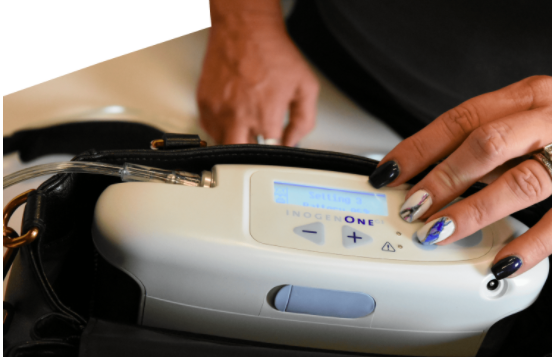
One final option for you to get your hands on an oxygen concentrator is through renting one. This is not always the most practical option, but if you know you will only be needing one for a few days or weeks, it may be your most cost-effective option. Renting an oxygen concentrator is ideal for people who typically use an oxygen tank or stationary concentrator at home, but want to be able to go on a trip without having to hassle with lugging their tank around or finding a place to refill it.
Overall, there are benefits to each of the buying options, it’s just a matter of your individual situation. Be sure to ask our oxygen concentrator specialists here at LPT Medical if you have any questions or concerns.
Take Advantage of Package Deals
Package deals are one of the best ways to save money on an oxygen concentrator. A package deal is when you buy accessories alongside your oxygen concentrator unit and get a discount on your final price. This means you’ll be able to save a lot of money if you buy everything up front rather than buying each accessory separately. Package deals are not always going on, so be sure to talk with your oxygen concentrator specialist who can let you know what’s available.
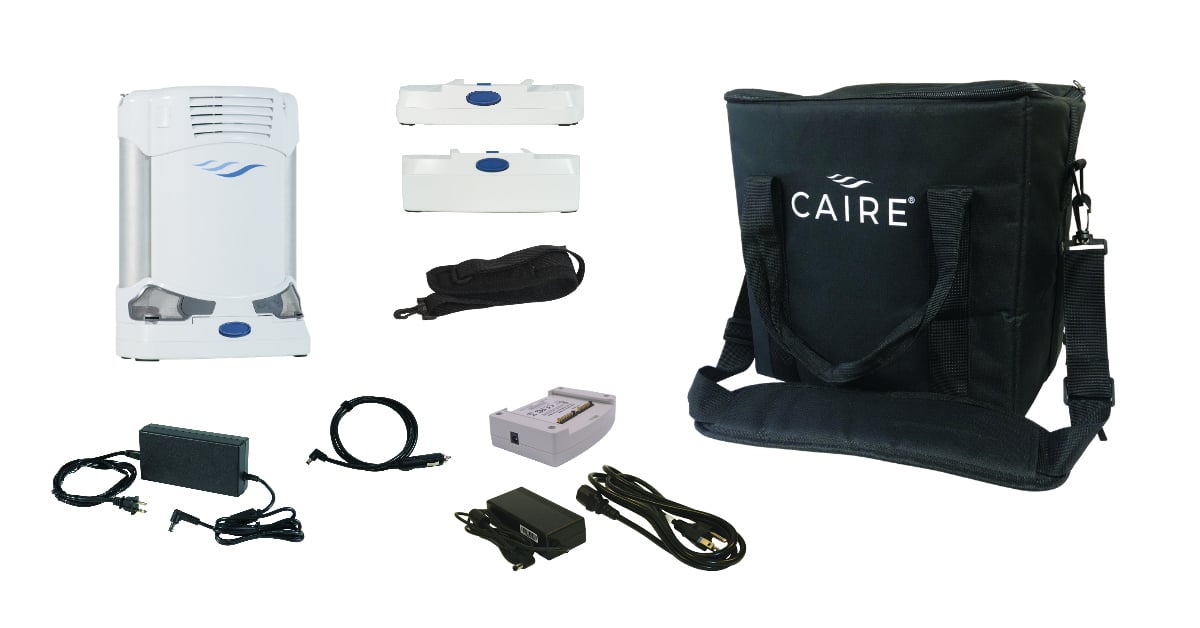
One package deal many people enjoy is one that offers a carrying case, battery, and DC charging cable. This way, you will have the ultimate freedom to move around the minute you receive your oxygen concentrator instead of having to order additional accessories later on down the road. Most oxygen concentrators come with the standard size battery but if you think you will need a battery that lasts longer, you can always upgrade it and maybe even get some additional savings that way.
{{cta('b59df0c1-c4de-47a8-8e1c-0d33d4b414aa','justifycenter')}}
Another reason to take advantage of package deals is that it could help you save money on shipping. With very few exceptions, it’s almost always cheaper to ship everything in one box rather than individually. While it may not seem like that much extra to ship a couple of accessories, the costs can really start to add up.
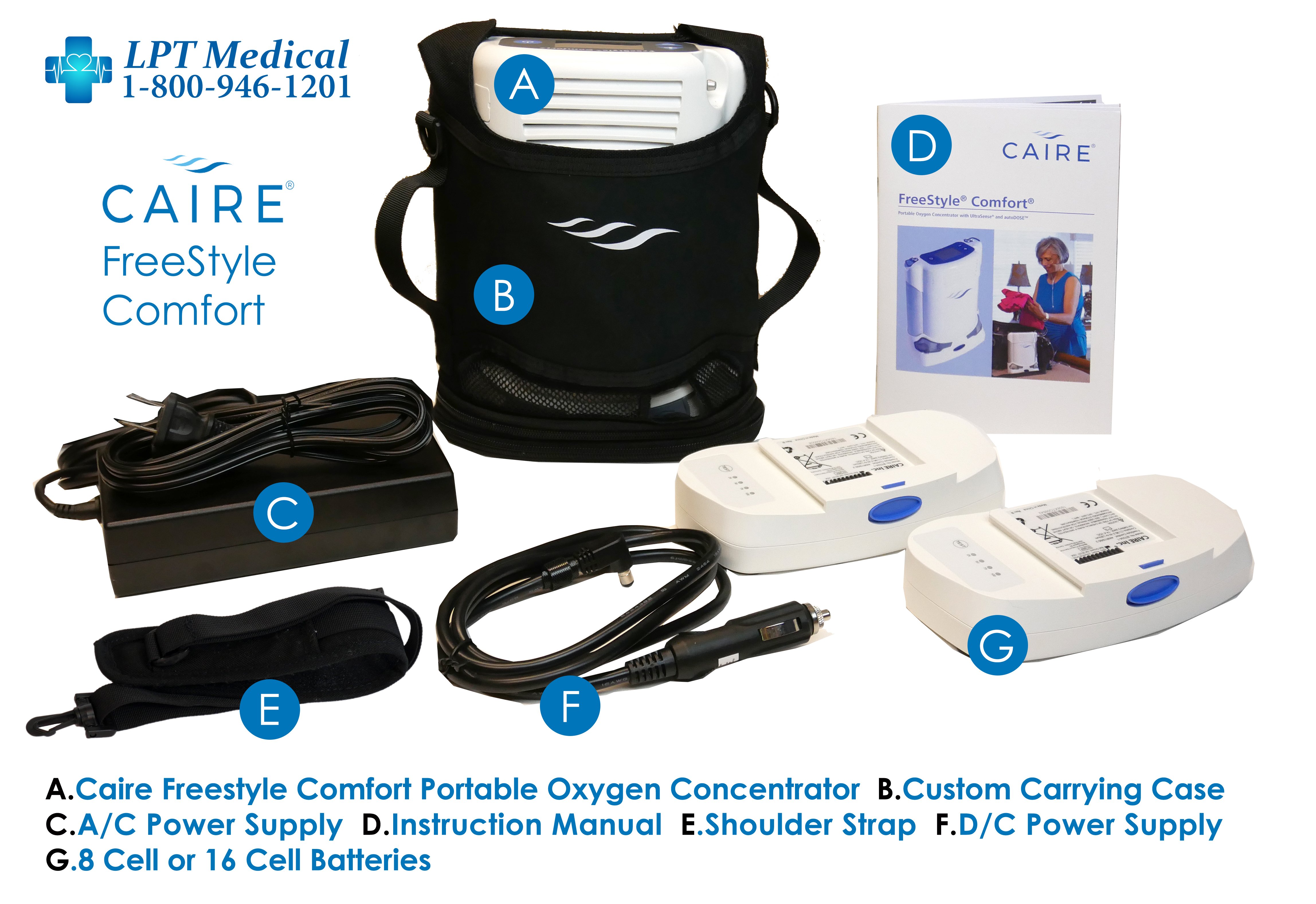
Two package deals we highly recommend are the Caire FreeStyle Comfort package and the Inogen One G5 package. These are some of the top-performing concentrators currently on the market, and when you consider everything that comes with them, you’ll see why they’re so popular. Just the base packages include an 8-cell battery, AC and DC charging cables so that you can charge your device anywhere, a carrying case, oxygen tubing, and a 3-year manufacturer warranty. Speak with one of our oxygen concentrator experts to see which one of these would be best for you.
Take Advantage of Sales
Sales are another thing you should keep an eye out for when you’re shopping for a portable oxygen concentrator. We offer a lot of oxygen concentrator sales here at LPT Medical because we want to get these devices to as many COPD patients as possible, even people who are on a tight budget. Currently, we are running a deal where you can get a free online pulmonary workshop course with the purchase of a new portable oxygen concentrator.
.jpg)
This program is called Thrive eLearning and it provides access to one-on-one counseling, support groups, and online courses that help you slow the progression of COPD. One of the important things you’ll learn during this course is breathing exercises which are a powerful tool for alleviating symptoms of breathlessness, fatigue, and chest pain which are commonly associated with COPD. You’ll also be able to connect one-on-one with doctors, caretakers, and other healthcare professionals, saving you time and money.
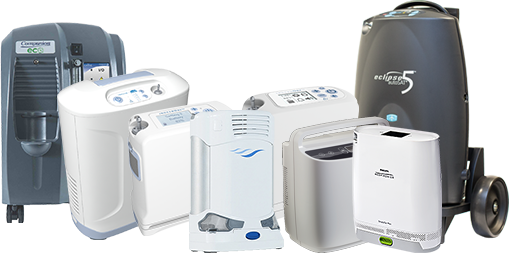
Sales are pretty common in the oxygen industry because the market is always changing. For example, we might offer a sale on one concentrator because a newer concentrator has hit the market. This is the perfect opportunity to get a great deal on a slightly older unit that still meets your needs perfectly. One of the best ways to keep up with these sales is to join our mailing list by filling out the form at the side of the page. You’ll be notified immediately whenever we have a new promotion going on!
Consider Your Financing Options
“Financing” an oxygen concentrator means splitting the payments up into more manageable monthly payments. While financing typically doesn’t save you money in the long run, it does lead to more financial security, because you won’t see the full cost of the concentrator come out of your bank account all at once. If at any time, you decide you want to pay off the rest of the concentrator all at once, you can do so without incurring any additional fees. Before committing to the financing terms, however, you should make sure that the company doesn’t charge a bunch of interest on top of the original price. Make sure you know what the exact amount of interest is and not just the monthly payments.
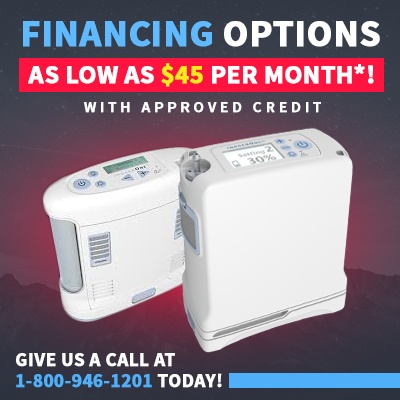
Conclusion
Oxygen concentrators are the ideal oxygen therapy device for most COPD patients. They’re very lightweight, compact, versatile, and most importantly, they provide you with medical-grade oxygen that you need to stay healthy. But if you want to get the best deal on an oxygen concentrator, you need to make several considerations first. Most importantly, you need to work with an oxygen concentrator retailer that you can rely on.
{{cta('43b79c5e-6bd6-4f02-ac27-2d038d20c146','justifycenter')}}
Here at LPT Medical, we take your oxygen needs seriously, and as such, we will take the time and diligence to understand both your medical and financial needs, then use our knowledge of the industry to align you with the perfect concentrator for you. It’s our goal to get an oxygen concentrator in the hands of any and all COPD patients who need them, so we will work with you to provide you with the best deal and we’ll even work with your healthcare provider to ensure you have all the necessary paperwork to buy an oxygen concentrator legally.
To get started, simply give us a call or shoot us an email.
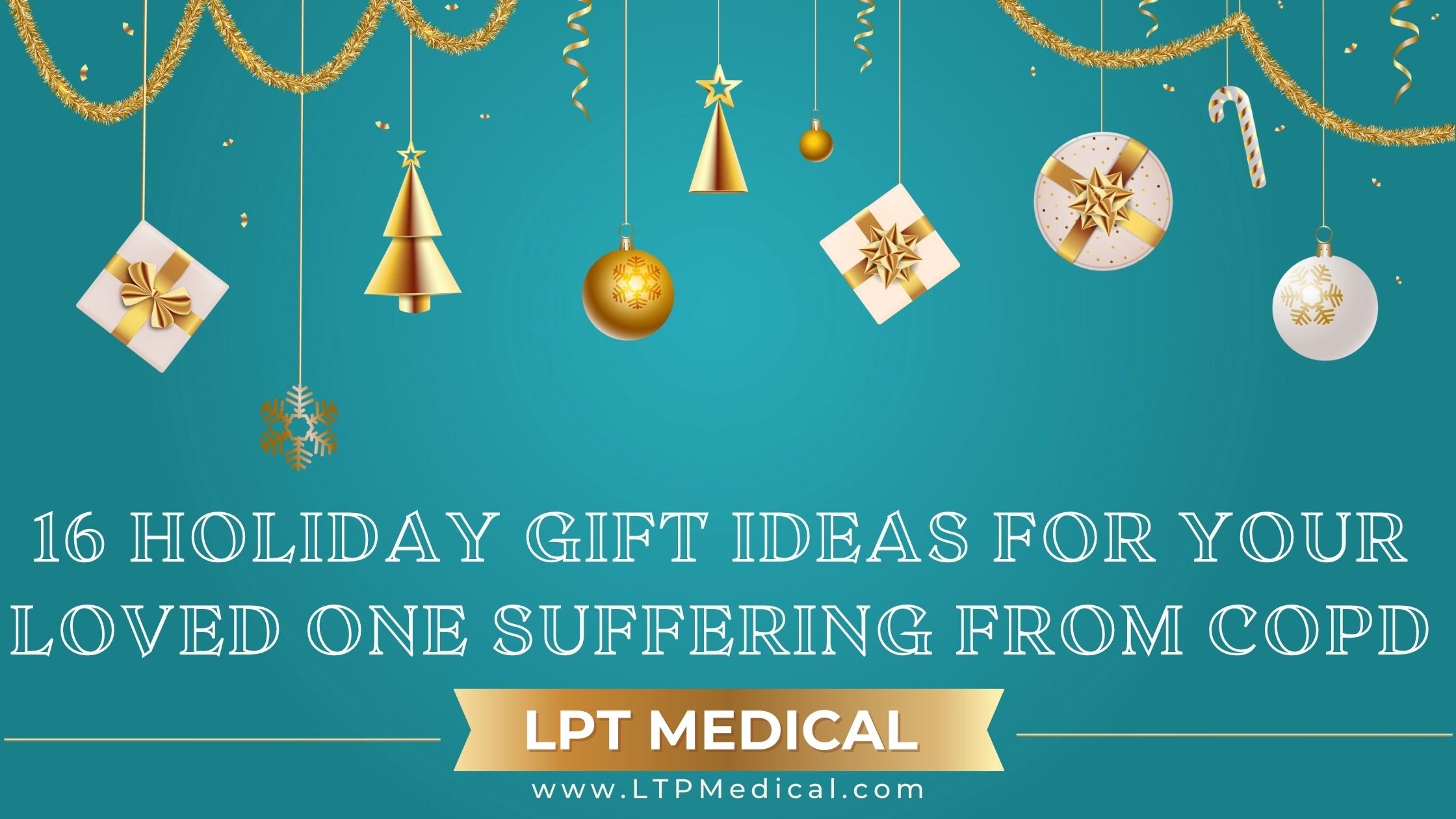
The holidays and shopping for friends or family with COPD can be difficult. But you know what's more difficult? Living with COPD every day of the year, and especially in the cold winter months!
Gifts can bring a lot of joy to the holiday, but special gifts picked out specifically for your loved ones with chronic respiratory diseases can bring joy that lasts throughout the year! Below are 16 practical Christmas gift ideas that COPD patients may find useful!
{{cta('fa8abc2a-1e88-4fa3-82fd-1cb5b9ed43b2','justifycenter')}}
So, while the gifts laid out in this article are practical and very useful for COPD patients, always remember that COPD patients may want something lighthearted, fun, that brings an element of the holiday spirit.
Exercise Bike
Exercise is an essential part of treating COPD. Exercise gives COPD patients hope for rebuilding strength and enjoying a fuller, more active life.

Pulmonary rehabilitation programs typically combine education, exercise training, nutrition advice and counseling, but for some people pulmonary rehab classes are not an option!
An exercise bike is a great option for low impact exercise that you can do from the comfort of your own home.
Nothing is more important to the person who has COPD than exercise. Exercise ultimately makes it easier for those with COPD to breathe by strengthening muscles, bones, and lungs.
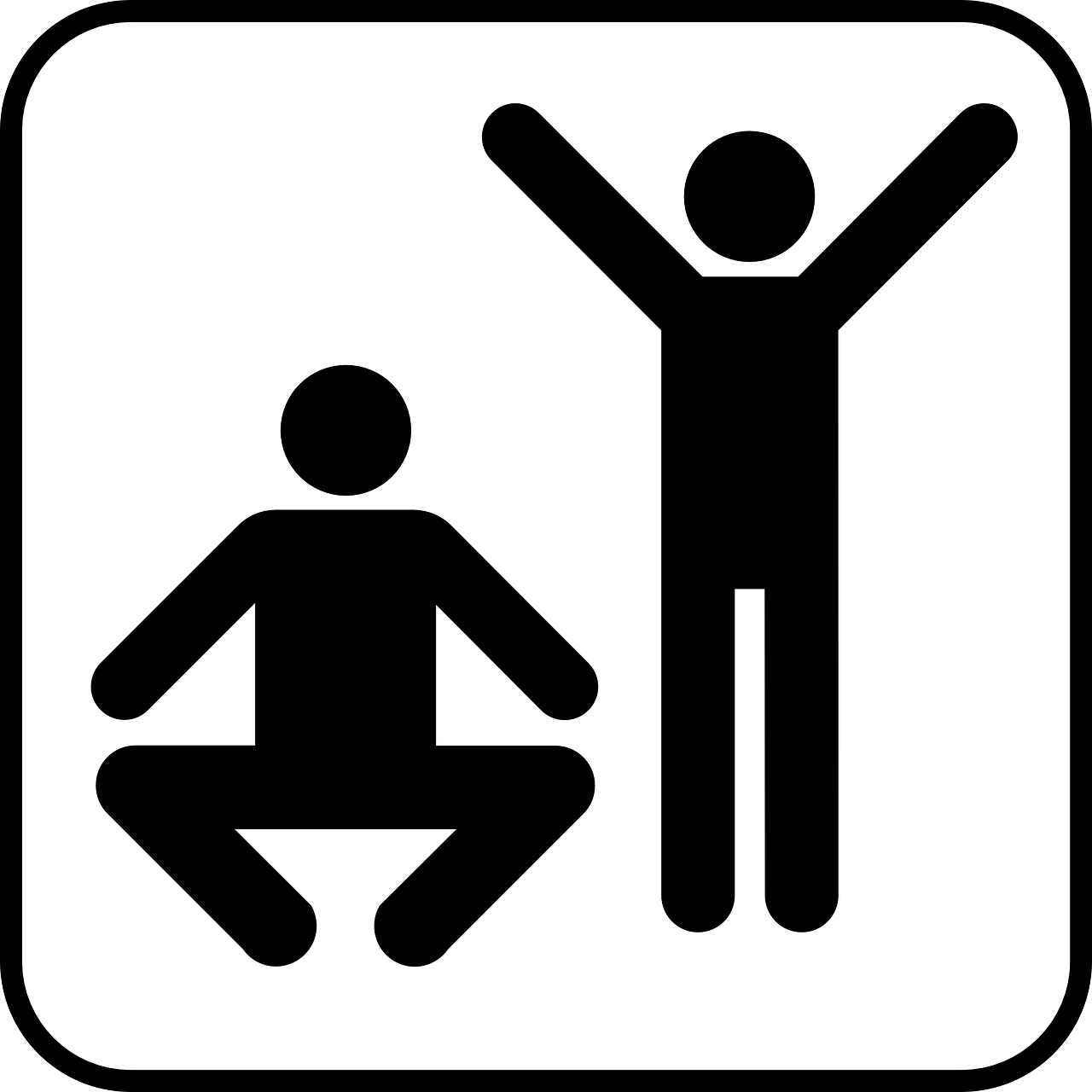
An exercise bike is something that will be valued by your loved one for years to come.
A tip for purchasing an exercise bike for a loved one is to choose a model that has several levels of resistance and a smooth magnetic resistance system so it can meet any COPD patient's needs.
Hat, Scarf and Glove Set

The cold winter months are a challenging time of year for COPD patients who already struggle to get around.
Staying warm is especially important for someone with COP. Breathing in cold air can ignite a bronchospasm and shortness of breath, causing a nasty flare up.
![]()
A scarf, hat and glove set will help your loved ones stay warm when they go outside and reduce the likelihood of them experiencing an exacerbation due to the cold air.
There are face masks designed for people with COPD that you can also buy. They are less fashionable, but offer a ventilation system that warms and moisturizes the cold dry air they are breathing in while outside!
Oxygen Therapy Gifts

If you are looking for a gift for a love one who uses oxygen therapy here are some ideas:
A New Pulse Flow or Continuous Flow Portable Oxygen Device
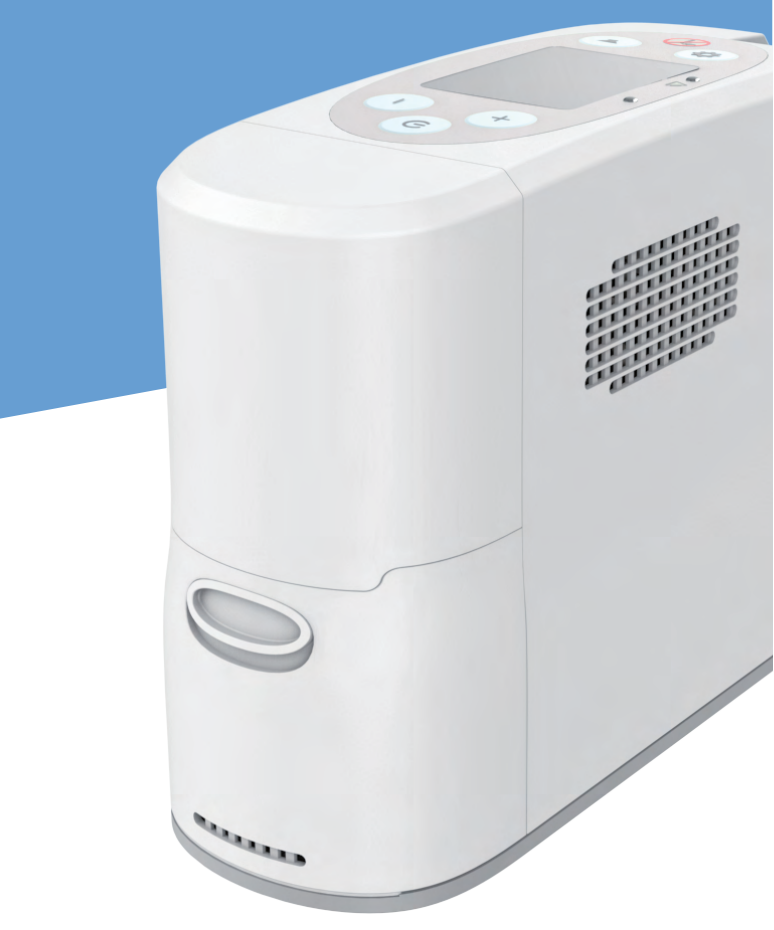
Pulse flow options:
Caire Freestyle Comfort
The Caire Freestyle Comfort is a pulse flow portable oxygen concentrator capable of delivering medical grade oxygen to COPD patients via face or nose cannula.
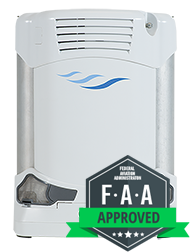
When you order the Freestyle Comfort from LPT Medical you are not only getting the portable oxygen concentrator, it will come with some additional accessories that will help your loved one make the most out of their oxygen therapy device, as well as a 3-year warranty!
Portable oxygen concentrators run off battery power, and the Caire FreeStyle comes with the 8-cell Lithium-Ion rechargeable battery. If you want a more powerful battery, you have the option to get the large Caire FreeStyle 16-cell battery.
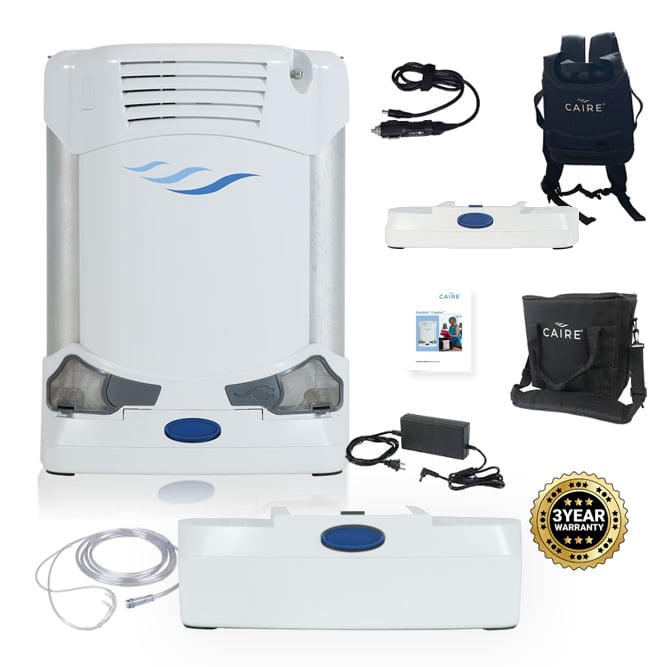
You will also get an AC adapter and the DC car adapter, which allows you to charge your device in a traditional wall outlet, or in the car using the cigarette lighter.
If you want another way to charge your device, you can purchase the Caire Freestyle external battery charger separately. With the external charger, you can keep your batteries charged no matter where you are in the world.
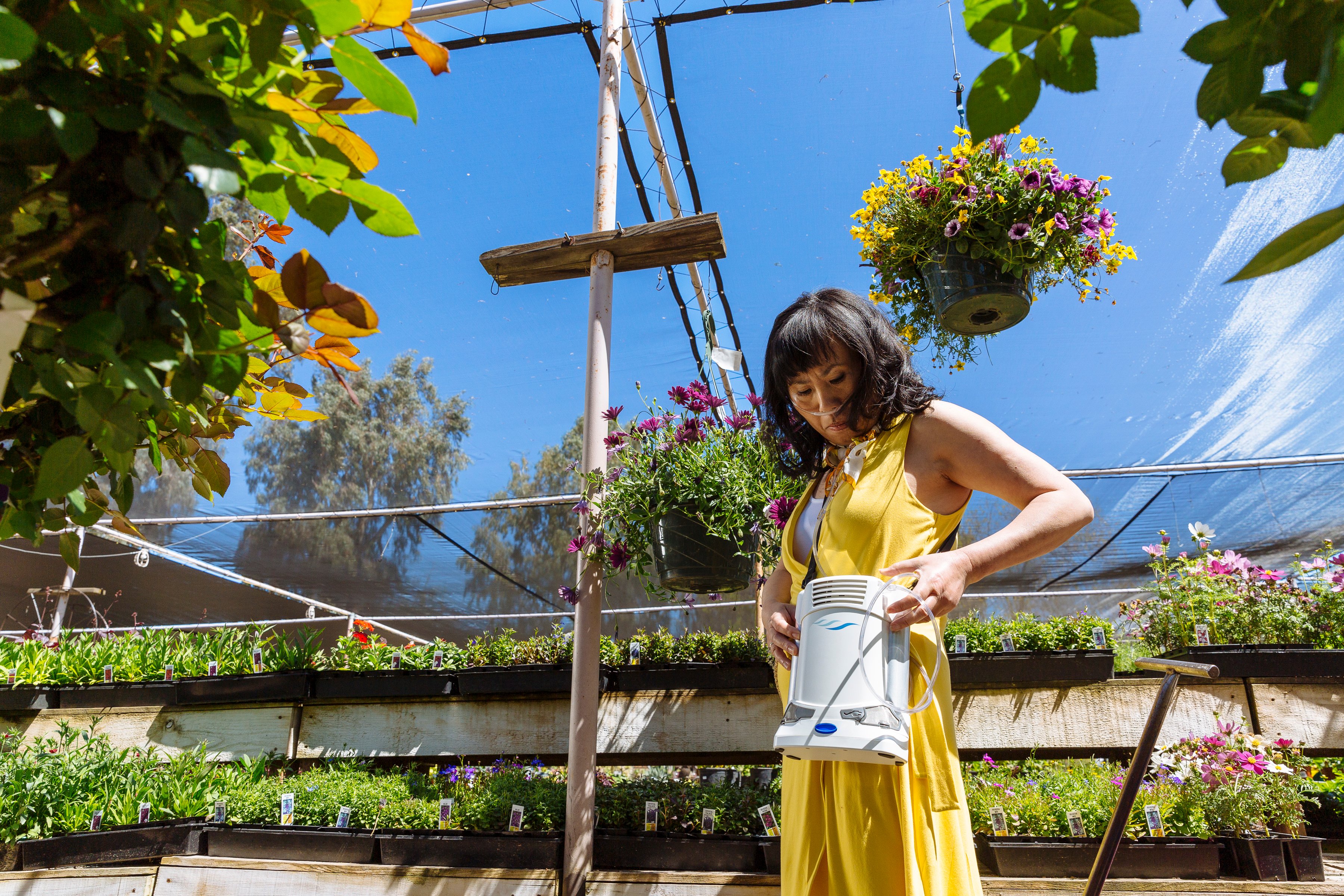
When you buy a Caire FreeStyle Comfort, you will also receive the Caire FreeStyle custom carrying case that comes with a convenient shoulder strap. You can also opt for another carrying method with the Caire Freestyle comfort backpack, this way you have several options to choose from when you carry your device with you.
With the purchase of the Caire FreeStyle Comfort, you will receive:
- 8-Cell Battery
- AC Charging Cable
- DC Charging Cable
- Caire Freestyle Custom Carrying Case
- Tubing
- Filter
- Manual
- 3 year-long warranty
Lifestyle P2
The Lifestyle P2 from Rhythm is one of the smallest and lightest units on the market. At 4.37 pounds, it offers pulse settings 1-5 and gets up to 5 hours of battery life.
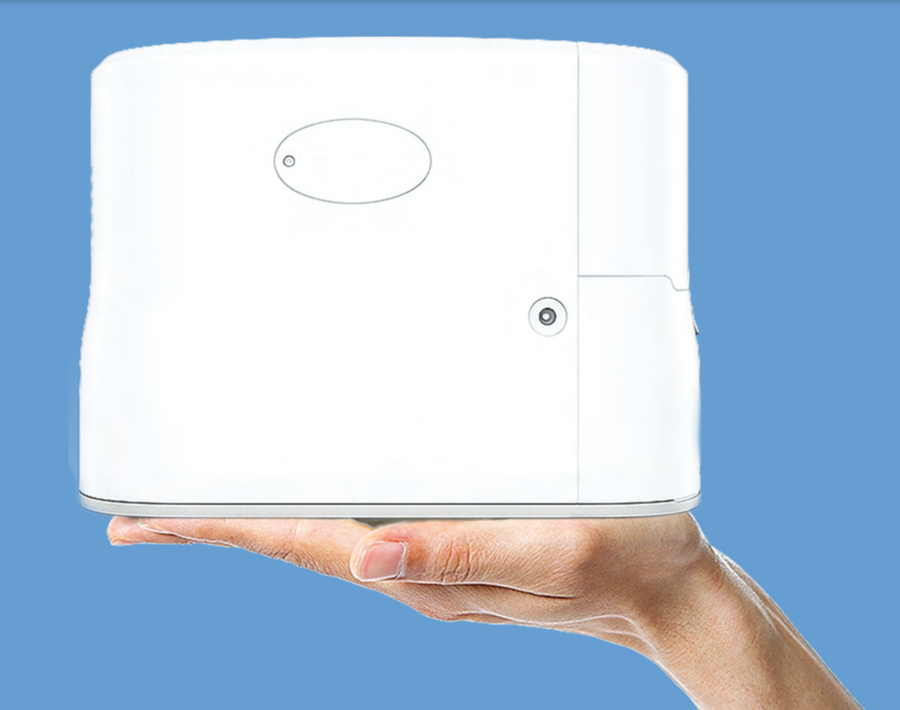
Rhythm products, specifically their Lifestyle P2 portable oxygen concentrator, is not only built to keep oxygen users safe, comfortable, and independent, it is also a source of guidance and education.
Lifestyle Mobility Aids exists with a simple mission— to take care of people with medical needs, including those with respiratory issues that need supplemental oxygen to survive.
What Comes With the P2 Rhythm Portable Oxygen Concentrator?
- P2 Rhythm Portable Oxygen Concentrator
- AC Power Supply
- DC Power Supply
- Rechargeable Battery
- Protective Carrying Case
- Shoulder Strap
- Tubing
- Filter
- Manual
- 3 year Warranty
Inogen One G5
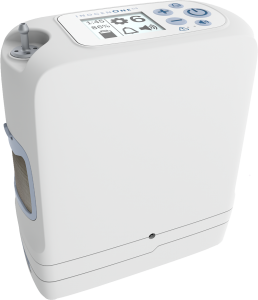
Medical oxygen tanks can be restrictive and oftentimes people sacrifice their freedom to hang out with friends or visit with family on your terms due to their oxygen device.
Help your loved one get back to doing what they love, ditch those cumbersome oxygen tanks and order the brand new Inogen One G5 portable oxygen concentrator.
Instead of worrying about refilling your oxygen tanks, the Inogen One G5 restores your mobility thanks to its portable delivery of pulse flow settings of 1-6, which is powered by a rechargeable lithium-ion battery.
Plus, if you’re familiar with the Inogen family of medical oxygen concentrators, the Inogen One G3 offers incredible battery life in combination with a compact and lightweight design. Well, the Inogen One G5 portable oxygen concentrator is lighter and offers a longer battery life than the Inogen One G3.
What Comes With Your Inogen One G5:
- Inogen One G5 Portable Oxygen Concentrator
- Single Battery
- AC Power Supply
- DC Power Supply
- Custom Carrying Case
- Shoulder Strap
- Tubing
- Manual
- 3 Year Warranty
Continuous flow options:
Respironics SimplyGo
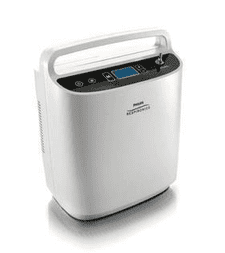
Philips Respironics broke the stereotypical design for continuous flow portable oxygen concentrators when they released the Respironics SimplyGo.
Ever since it was released it has been one of the top continuous flow units on the market! However, its small size isn’t the only reason it’s been one of the top units on the market. Backed by one of the biggest names in the respiratory field, the SimplyGo is as reliable as they come!
If you are looking for a lightweight portable continuous follow device to gift your loved one for the holiday call 1+(800)-946-1201!
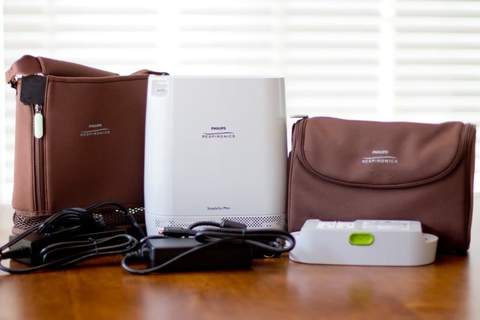
What Comes With Your SimplyGo?
- Respironics SimplyGo Portable Oxygen Concentrator
- 1x Battery
- AC Power Supply
- DC Power Supply
- Custom Carrying Case
- Padded Shoulder Strap
- Padded Handle Strap
- Travel Cart
- Accessory Bag
- Tubing
- Manual
- 3 Year Warranty
SeQual Eclipse 5
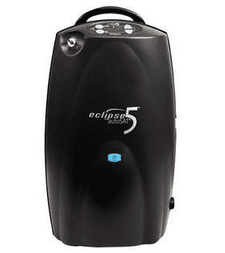
The SeQual Eclipse 5 is the 4th generation model in SeQual’s extremely popular Eclipse line of concentrators.
In fact, the Eclipse 5 is one of the best selling and most reliable continuous flow portable oxygen concentrators on the market. It offers the highest oxygen output on the market, gets good battery life, and it was also designed for the US Military.
What Comes With Your Eclipse 5?
- SeQual Eclipse 5 Portable Oxygen Concentrator
- 1x Battery
- AC Power Supply
- DC Power Supply
- Travel Cart
- Accessory Bag
- Tubing
- Filter
- Manual
- 3 Year Warranty

Other COPD Gift Ideas
FDA Approved Pulse Oximetry Monitor
![]()
Having a FDA approved pulse oximetry monitor indicates whether or not you are getting enough oxygen.The large, easy to read LED display and accommodates fingers of all sizes, and is each to bring anywhere due to its compact size.
Blood Pressure Monitor
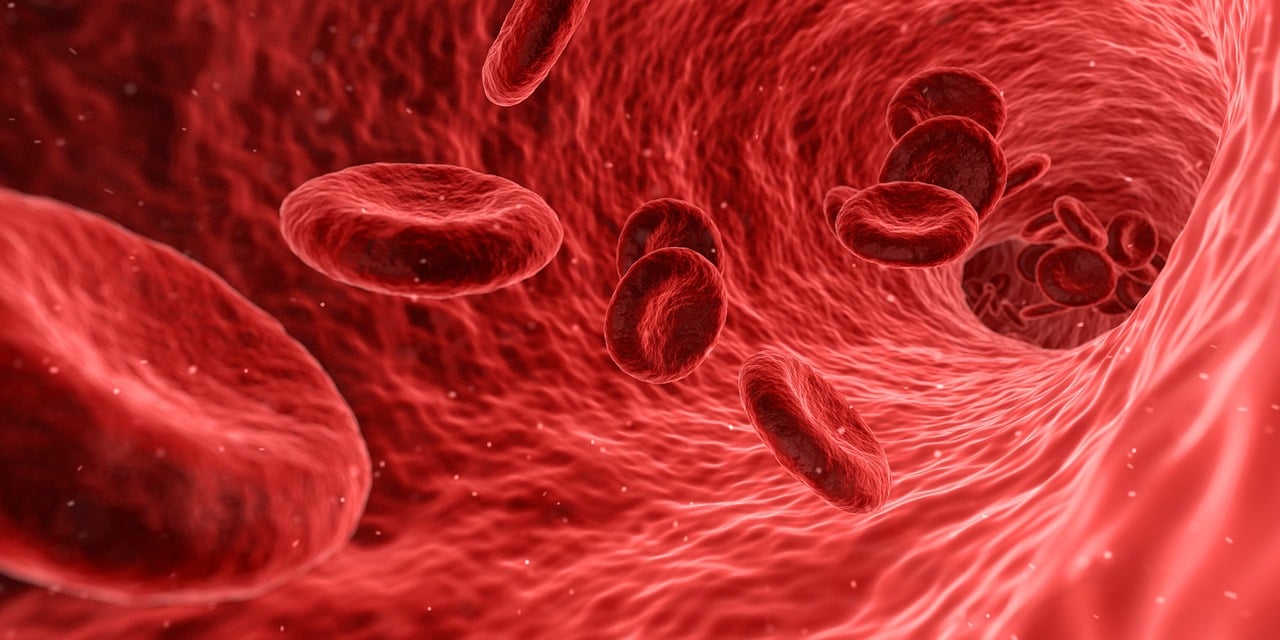
A blood pressure monitor is an essential piece of a COPD management kit! Many people with COPD also struggle with other complications and may take a variety of medications. Maintaining healthy blood pressure is an essential part of disease management.
Blood Pressure Monitor can also display an automatic alert if an irregular heartbeat is detected and the ability to remember the last 100 BP readings. All great safety features that help to better understand what the body is doing and how it functions in certain situations.
Nebulizer Compressor Kit
A nebulizer administers medication directly into the COPD patient's airways, helping them breathe easier.
Some COPD patients are lucky enough to have insurance that pays for their nebulizers, but this is not always the case and many are unable to afford one.
If your loved one does not have a nebulizer compressor kit, it is a great gift that keeps on giving.
Custom carrying backpack for the Inogen One G5

A custom carry backpack is just the ticket your loved one needs to live a more active and independent lifestyle.
This backpack is lightweight and durable, this one can be used with almost any compact portable oxygen concentrator but it fits the One G5 perfectly. It is perfect for COPD patients who like to travel and be active.
COPD for Dummies
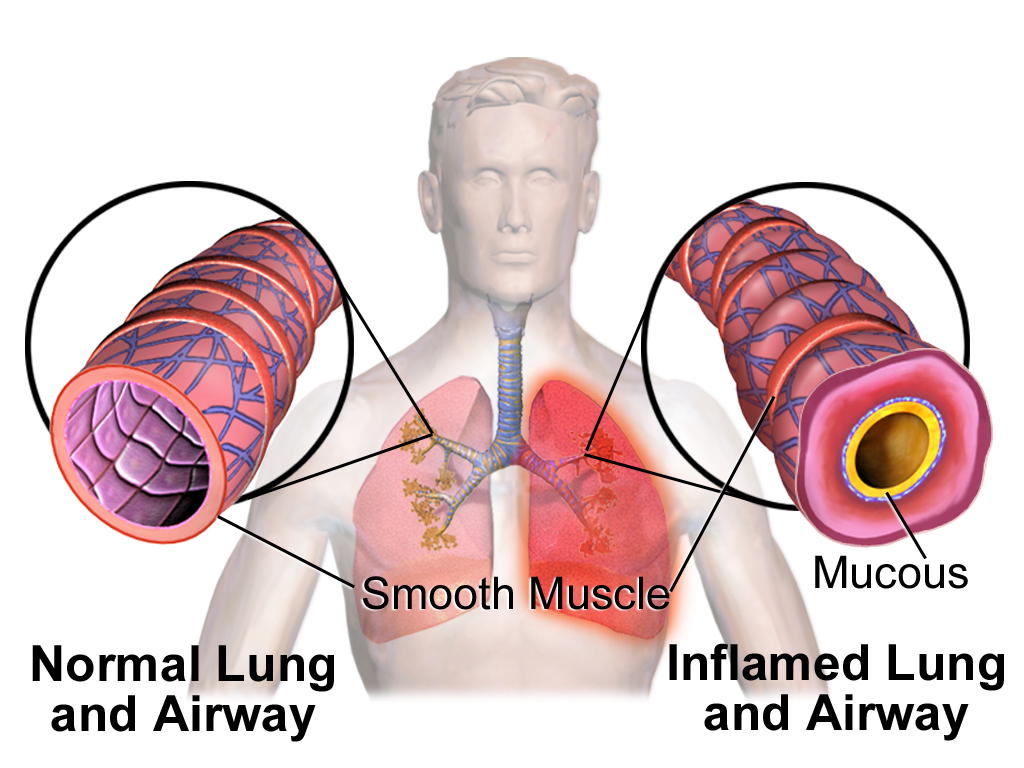
COPD for Dummies or any other resource that helps explain COPD is a great gift that help educate the family on COPD so everyone is capable of lending a helping hand, but also so that everyone can understand the disease and its toll it take on those diagnosed with it
The book includes the most basic information on COPD symptoms, diagnosis, causes, treatment, and how to cope with COPD.
This may be a nice gift for those who were recently diagnosed with COPD.
Overview
![]()
Make the holidays extra special this season with gifts for people in your life with COPD! Buying them gifts that are practical and useful for disease management can help them all year around become more independent and healthier!
If you are interested in the process of buying a portable oxygen concentrator or accessories to go with their portable oxygen concentrator simply call 1+(800)-946-1201
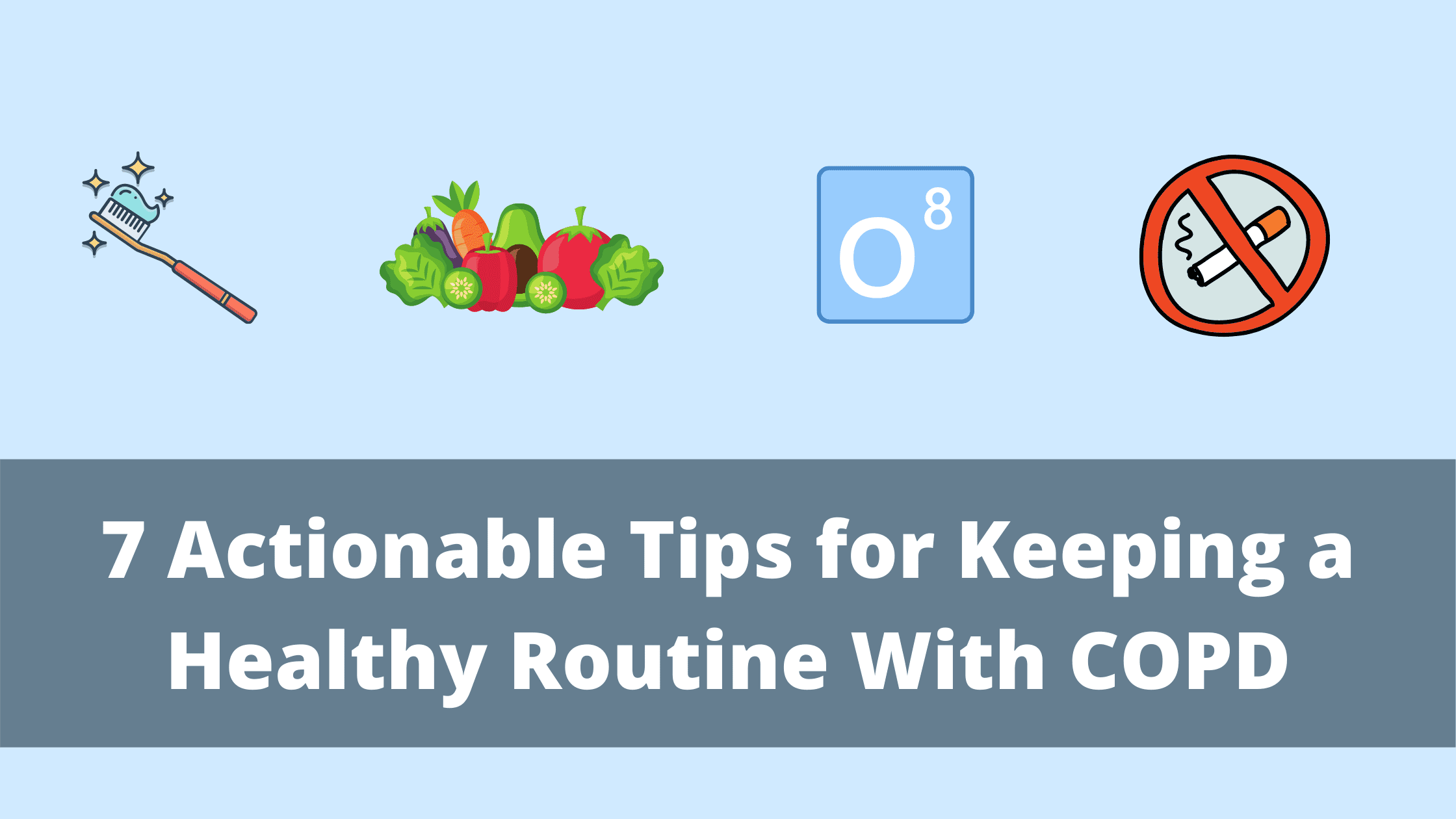
When you think about your daily routine, what comes to mind? Maybe you think of making your bed, taking a shower, or making a cup of coffee. These are all things that most people do sequentially and sometimes even subconsciously. But have you ever wondered why it’s so easy to do these things regularly, but something like implementing a new diet or exercise routine can feel near impossible to achieve?
As COPD patients, we’re faced with a difficult decision: either ignore our treatment plan and maintain the unpredictability of life or live life by the books, following every rule that our doctor tells us. However, with some hard work and determination, it’s possible to accomplish both of these tasks without having to stress about whether you’re making the right decisions.
If you’re a COPD patient who has trouble making and sticking to a routine, read on because we’re going to take a deep dive into some of the biggest roadblocks preventing COPD patients from living a healthy and happy life. As always, if you’re planning on making any major changes to your treatment plan, be sure to speak with your doctor first.
Why Are Routines So Important?
A routine is something that you do habitually. In other words, it’s something you do without giving much of a second thought to. These can either be good things like going to bed at the same time each night; or bad things like smoking cigarettes after lunch. But the one thing they have in common is that they both feel natural in your day-to-day life. Without having these routines, we might feel a lack of structure or direction in our lives.

Another problem with having no routine is that it can be mentally and physically exhausting to accomplish goals. For example, if you’re constantly having to fight yourself to eat the right foods or take your medication on time, you might get behind on them and get discouraged. Each time this happens, you’re getting farther and farther away from accomplishing your goal.
But one of the most common misconceptions about good habits is that just because something works for one person does not necessarily mean it will work for another. This is why it’s important to start with a broad overview, then narrow down something that will work for you.
Make Sure You Understand Your Long-Term Goals
Generally speaking, bad habits are the result of a narrow-minded approach to your health. For example, if you take a smoke break in the middle of the day you’re only taking into consideration how you’re feeling at that moment. You might feel stressed or antsy early in the day, but after smoking, you feel satisfied and complete. However, in reality, smoking actually increases stress, because, after an initial release of dopamine in the brain, you’ll begin to experience withdrawals which make you feel even worse than before.
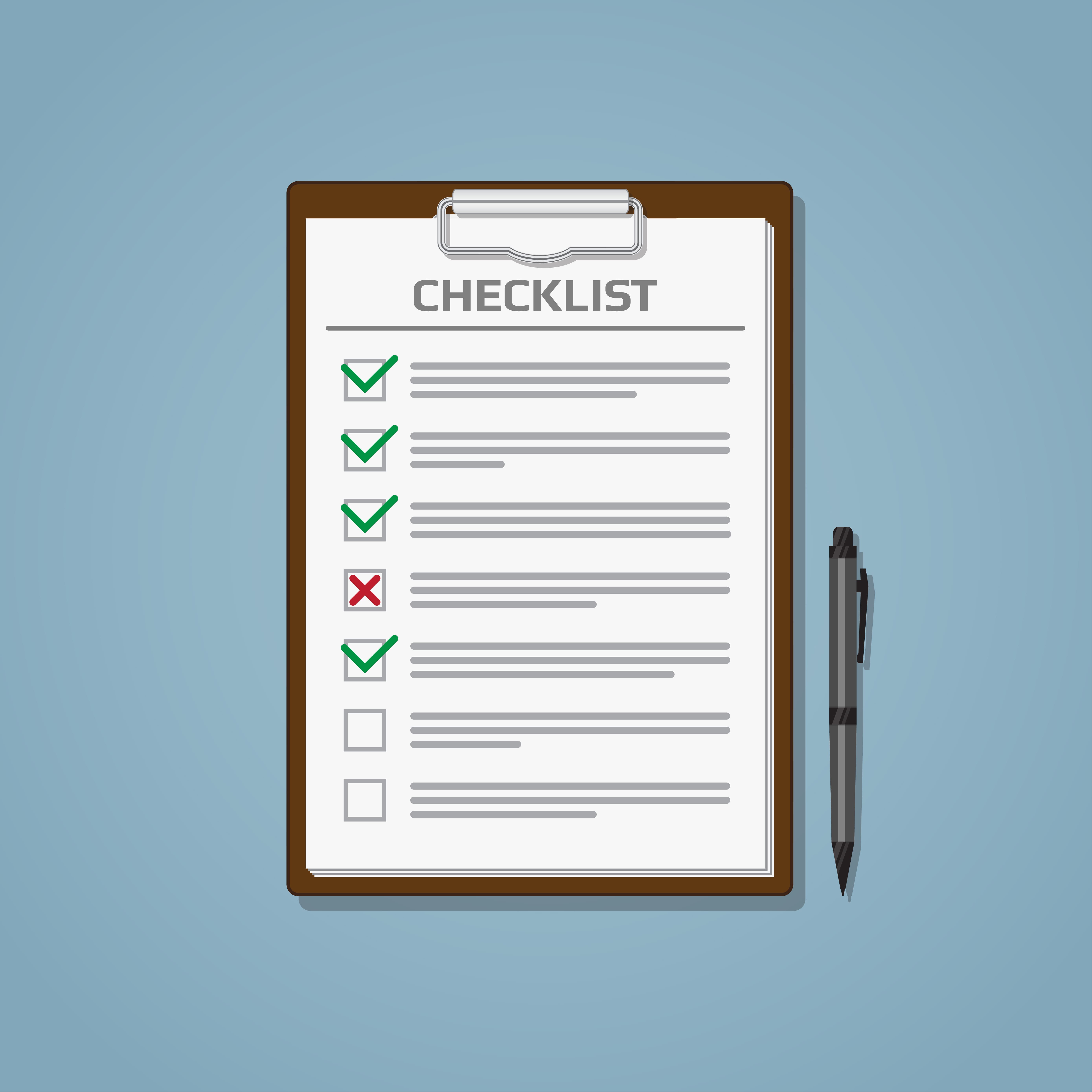
Whether you’re struggling with bad habits involving smoking, your diet, exercise, or anything else, the best place to start is by shifting your focus to long-term thinking. Rather than creating habits that satisfy your immediate desires, you should be creating habits that reinforce what you’re trying to accomplish in life. This is an important step because the more clearly you define what you’re trying to do, the more obvious it will be if you start falling back on your goals.
Eliminate Any Distractions
Distractions are so commonplace in the modern world. If you own a phone, tablet, computer, or any other electronic device, you’re probably well aware of how easy it is to spend hours on these devices without even acknowledging what’s going on in the real world. According to Kommando Tech, people check their phones an average of 58 times a day. Even if you’re looking at your device for a fraction of a second to check or reply to a message, you’re still taking your mind off of whatever you were doing. Over time, this could become a significant roadblock preventing you from implementing healthy habits.
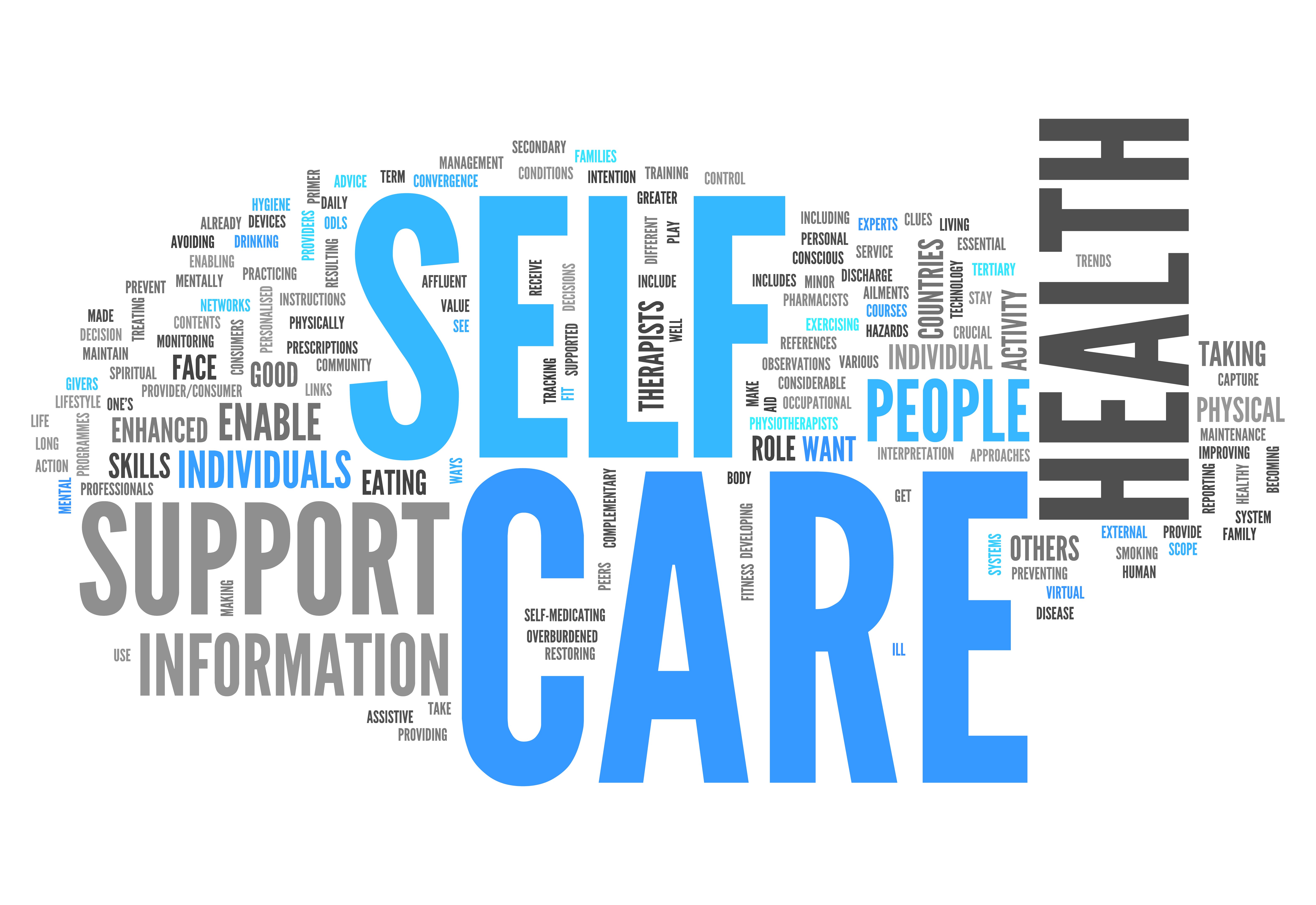
Electronics are not the only distractions in our lives, however. If you take some time to think about the distractions in your life, you’ll likely come up with a good list of things. For many people, a dirty or cluttered home can be a distraction. According to Men’s Health, a messy home can contribute to anxiety, affect your quality of sleep, and contribute to avoidance strategies that make us less productive. These are just a few of the distractions that could be present in your life. Be sure to take some time to sort these out before you move on.
Make Reminders Around Your Home
Chances are, you have that one friend who likes to create reminders for everything, even for things that don’t seem important. From an outside perspective, this can be a little overbearing; but if you’re the one setting the reminders, it might make more sense to you. Reminders are a great way to force yourself to stick to a routine, at least until you’re able to do it without them. Some people prefer to make physical reminders on a notepad or sticky note, but others prefer to use digital reminders on their phone or computer. Better yet, you could try a combination of the two.
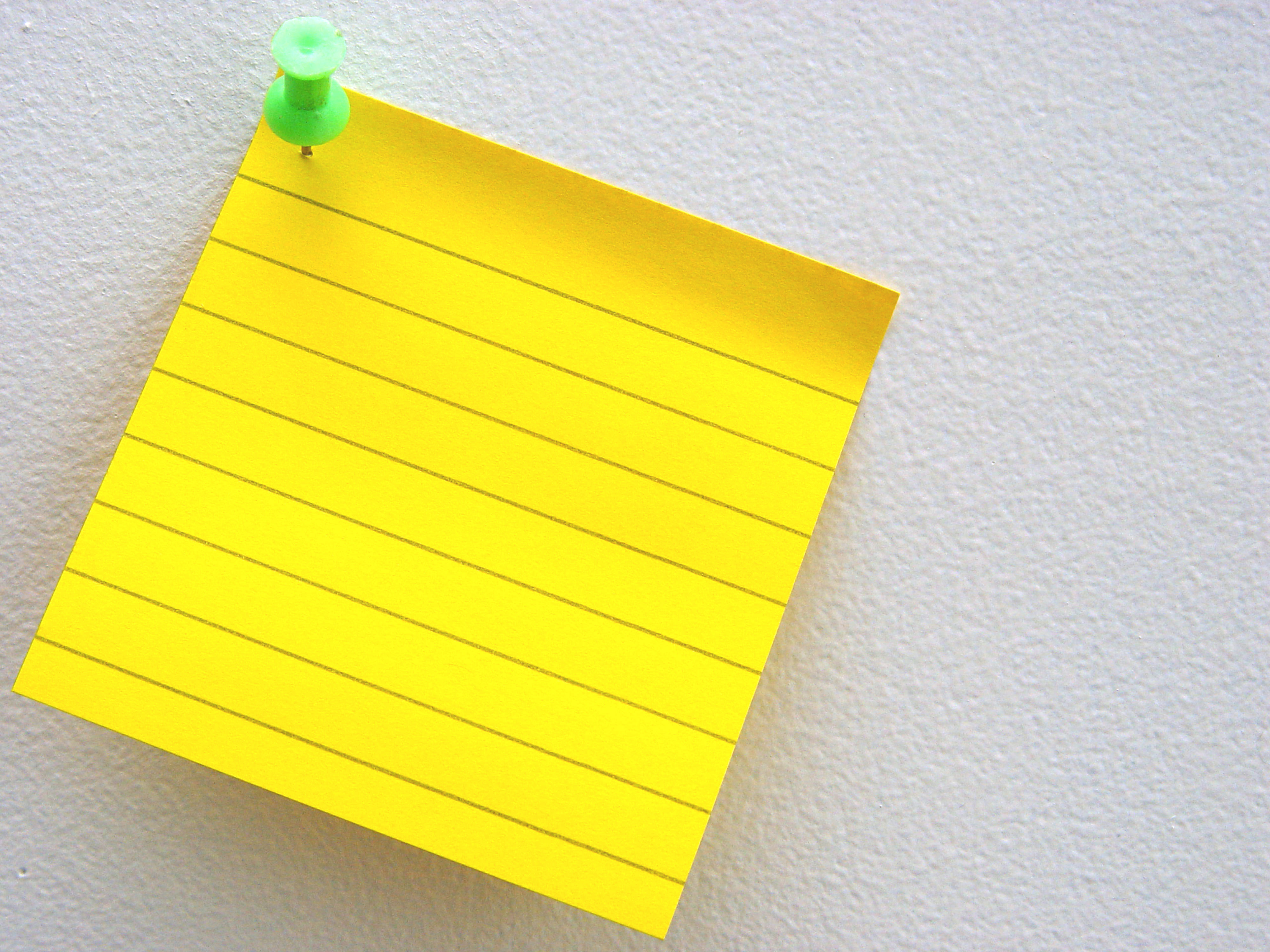
Physical reminders are great if you want to keep yourself on track throughout the day. For example, you could place sticky notes on the door reminding you to take your medication before leaving the house or you could put sticky notes on your fridge to remind you what foods to avoid. Setting reminders on your phone can also be useful if you want to remind yourself of doctor’s appointments or when to exercise. The type of reminders you need will depend entirely on what habits you struggle with keeping, but generally speaking, they’re a great way to keep you on track.
Find Ways to Make Your Routine Easier
Most people prefer to find the path of least resistance when it comes to accomplishing their goals. There’s no point in adding any unnecessary struggle, especially if your health is at risk. So, it goes without saying that any little thing you can do to make your health routine easier to follow will be very beneficial in the long run. One of the best things you can do to simplify your COPD treatment plan is to invest in a portable oxygen concentrator.

A portable oxygen concentrator is an electric oxygen generator used to replace old, outdated types of oxygen equipment like oxygen tanks and liquid oxygen tanks. They work by drawing in ambient air that you would normally breathe and then removing gases like nitrogen, argon, and more. The device then puts out medical-grade oxygen through the nasal cannula. You’ll receive the exact same amount of oxygen with a portable oxygen concentrator, but the device is much easier to manage.
First and foremost, portable oxygen generators are much lighter than oxygen tanks. A pulse dose concentrator like the Inogen One G5 is under 5 pounds making it very easy to carry on your shoulder or back. Oxygen tanks, however, tend to be much heavier at around 10 to 15 pounds. As a result, you’ll need to wheel your oxygen tank around using a carrying cart. This is especially inconvenient if you need to go up a flight of stairs or some other obstacle.
{{cta('fa8abc2a-1e88-4fa3-82fd-1cb5b9ed43b2','justifycenter')}}
Another problem with oxygen thanks is that they are very bulky and oblong. So when it comes to storing one, you’ll have a difficult time. Since they’re highly pressurized and contain medical oxygen, they can be very dangerous. Oxygen tanks can be stored at 2,000 pounds per square inch (PSI) or more which makes them a hazard to keep around the house. Portable oxygen generators don’t have any compressed oxygen inside the unit so they don’t have this problem.
Finally, portable oxygen concentrators are simply put, much easier, and convenient to use. Oxygen tanks need to be refilled by a professional when they run out of oxygen, but POCs just need to be recharged. Since the batteries are so light, you can carry plenty of backup batteries with you wherever you go and you’ll never run out of oxygen. You can even use your POC while it’s plugged into the wall charging.
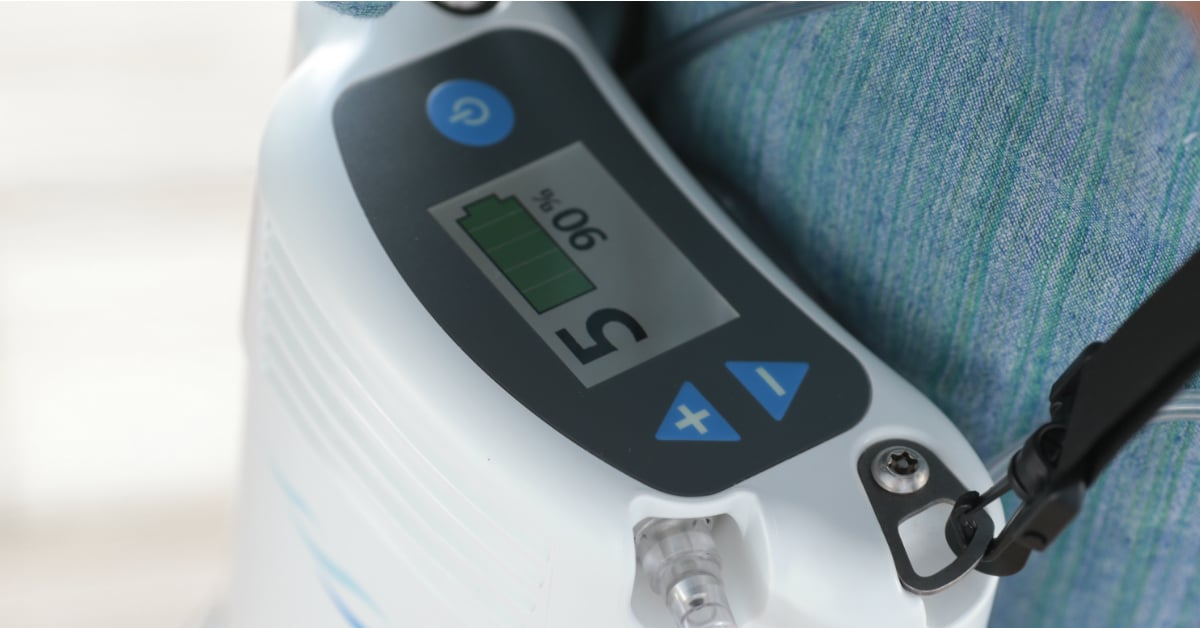
The reason POCs make your COPD routine easier is that they are mostly out of sight and out of mind. Rather than having to worry about whether or not you’re getting enough oxygen wherever you go, POCs provide you with a consistent and reliable source of oxygen that won’t fail when you need it the most. COPD patients who use concentrators find that they spend less time thinking about their disease and more time living their lives.
Don’t Get Thrown Off by a Change of Plans
It’s happened to all of us… we’re doing a great job of maintaining good habits and working towards our goals. Then, all of a sudden, something happens that causes us to get off course. Life isn’t always going to be predictable, so we need to be prepared when our plans change and we aren’t able to follow through with our normal routine.

It’s important that you have the freedom to attend family events and visit friends whenever you want. But at the same time, you need to have a plan to stay on track towards meeting your goals even with all of life’s surprises. One way to do this is to simply notify your friends and family about your routine so that they can help you stay on track.
Get Plenty of Sleep
One of the most important factors that will help you maintain a routine is alertness. Studies have found that COPD patients are significantly more likely than the general public to experience sleep disruptions that can lead to daytime sleepiness and even contribute to COPD flare-ups like breathlessness, chest pain, and fatigue. It’s important to fix these underlying issues if you want to have the energy to follow through with your routine. Try some of the following tips to improve sleep with COPD:
![]()
- Changing your sleeping position can take some stress off your lungs and promote more restful sleep. The Lung Institute recommends sleeping on your side with your head slightly propped up to improve breathing.
- Avoid taking naps during the day. A consistent nighttime sleeping pattern will keep you more alert and prevent daytime drowsiness.
- Avoid using electronics right before bed. Staring at a screen as you’re winding down for the night can mess with your body’s circadian rhythm.
- Exercise more consistently. Moderate exercise increases the amount of slow-wave sleep you get. In other words, you get more “deep sleep” where your body and mind are able to rejuvenate.
- Get tested for a sleep disorder. COPD-OSA overlap syndrome is a common cause of sleep disruptions. Treating obstructive sleep apnea will be the best way to experience better sleep at night.
- Speak to your doctor about your medication. Certain COPD medications may contribute or outright cause sleep problems.
Speak With Your Doctor
Ultimately, your doctor will be your greatest resource if you’re having trouble following your treatment plan. He/she may have some helpful tips to keep you on track, or your doctor may be able to alter your treatment regime completely in order to make it easier to follow. Another thing that your doctor can do is refer you to a mental health specialist who can help you cope with the mental and emotional aspects of dealing with chronic obstructive pulmonary disease. Cognitive behavioral therapy is one of the most trusted forms of therapy.

Cognitive Behavioral Therapy
Cognitive behavioral therapy (CBT) is a type of therapy that aims to change the way that you think and act. It’s designed to target negative or inaccurate thinking patterns that can lead to you developing bad habits. CBT is a type of psychotherapy (talk therapy) that usually involves a one-on-one conversation with a mental health counselor. Most commonly, CBT is used to treat mental health conditions like depression, anxiety, or eating disorders, but it can be used by anyone to help people cope with difficult situations like living with COPD. Below are the steps involved in a CBT session:
Identifying the problem: Before you can solve the problem you need to know what’s causing it. Your first session of CBT will likely be focused on targeting troubling situations or conditions in your life. This could be things like COPD symptoms, or a troubling experience involving a flare-up or exacerbation.
Becoming aware of your thoughts and feelings about these events: Next, it’s important for you and your therapist to understand exactly how you’re reacting to these problems. You may be asked to keep a daily journal where you write down your change of emotions throughout the day.
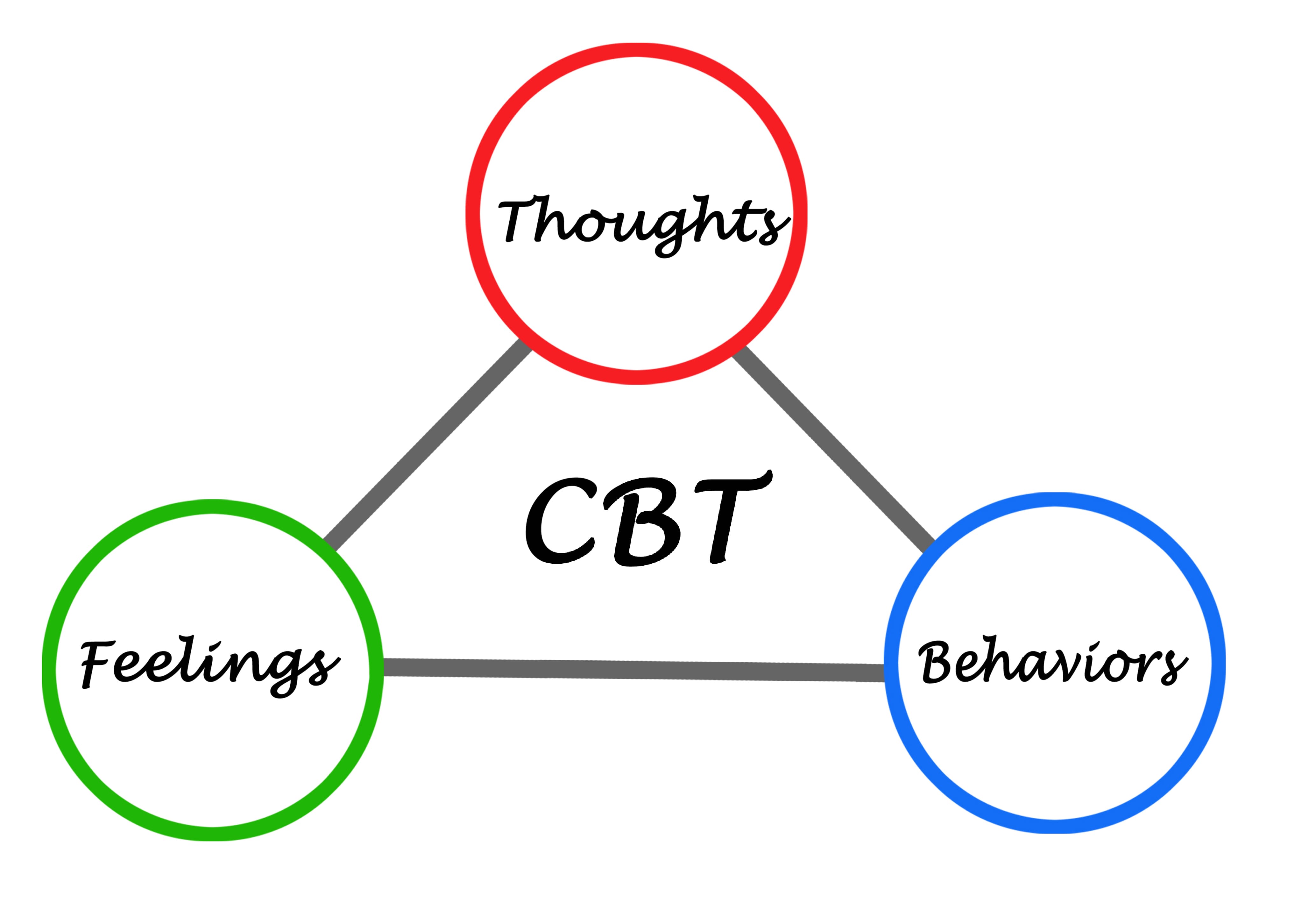
Understanding negative or inaccurate thinking: Destructive thoughts are usually the result of an inaccurate interpretation of an event. This step will help you identify these thoughts so that they can be reversed.
Reinforcing positive thinking patterns: Finally, you and your therapist will working on reinforcing constructive thoughts throughout your daily life. This could take several weeks or several months depending on how receptive you are to the changes.
Conclusion
At the end of the day, it’s much easier to give in to bad habits than to reinforce good habits, especially if you suffer from a chronic illness like COPD. Being diagnosed with COPD means having to take on new responsibilities and pay closer attention to how your daily routine affects your long-term health. This can feel overwhelming at times, but if you break it down and understand how habits develop in the first place, it will be much more manageable.
{{cta('43b79c5e-6bd6-4f02-ac27-2d038d20c146','justifycenter')}}
In this post, we showed you just a few of the things you can do to maintain healthy habits with COPD. However, as we mentioned, everyone is different and what might work for one person may not work for another. If you’re still struggling with managing COPD symptoms, be sure to stick to our blog. We try to provide respiratory patients with a unique perspective on their disease as well as providing tips that you won’t find anywhere else.
If you’re looking for a portable oxygen concentrator for sale in Denver, don’t hesitate to reach out to our respiratory specialists here at LPT Medical. Since most COPD patients need 24/7 supplemental oxygen, it’s our goal to ensure they are able to do this comfortably and without affecting their daily routine. Call us at 1-800-946-1201 today to speak with a respiratory specialist.


 So we can find the best portable oxygen concentrator for your needs!
So we can find the best portable oxygen concentrator for your needs!













